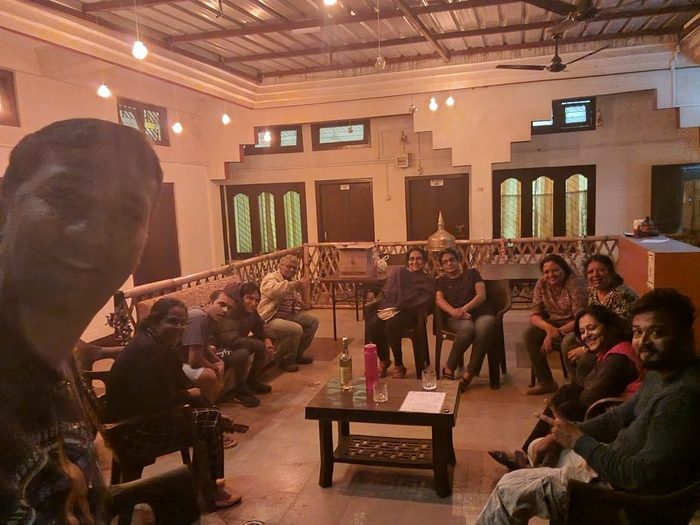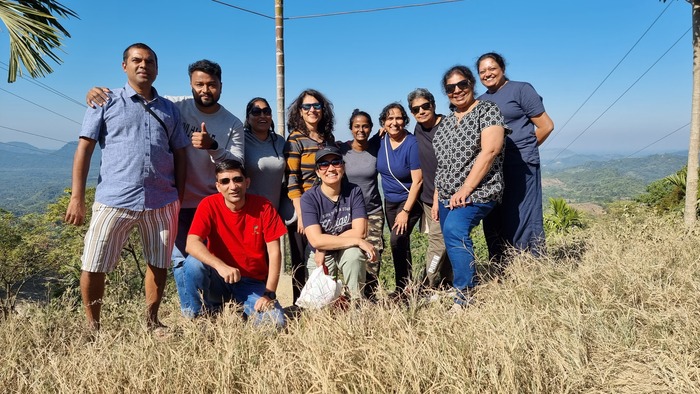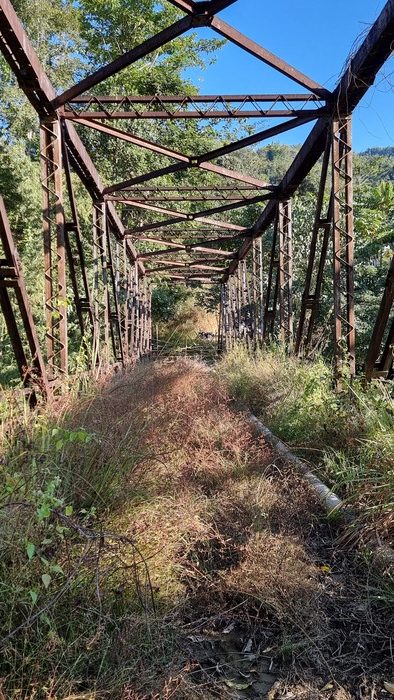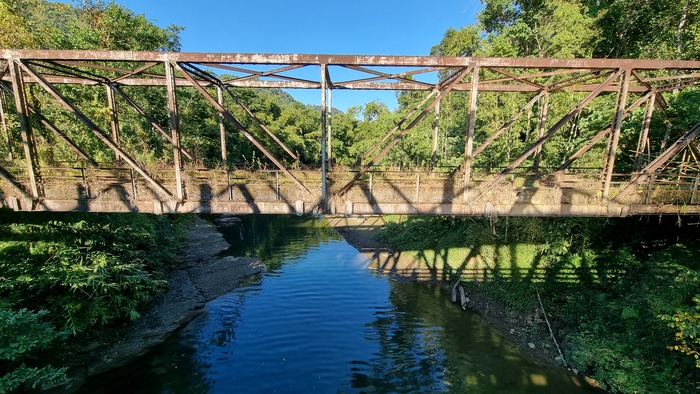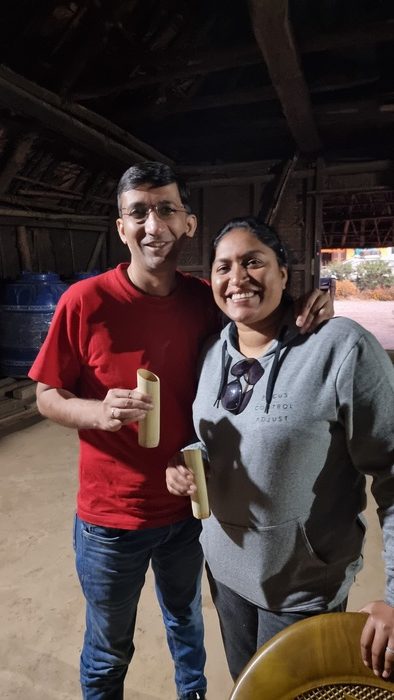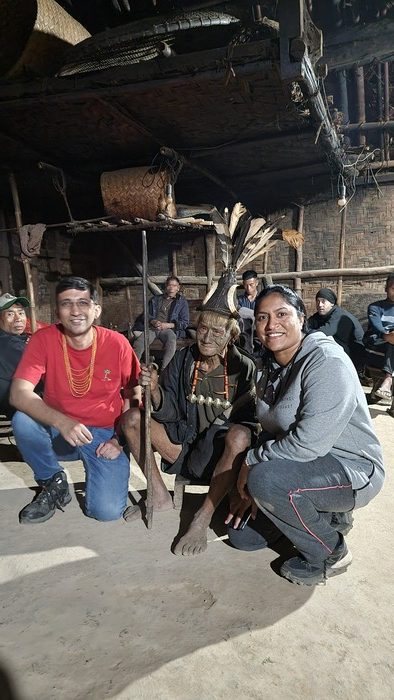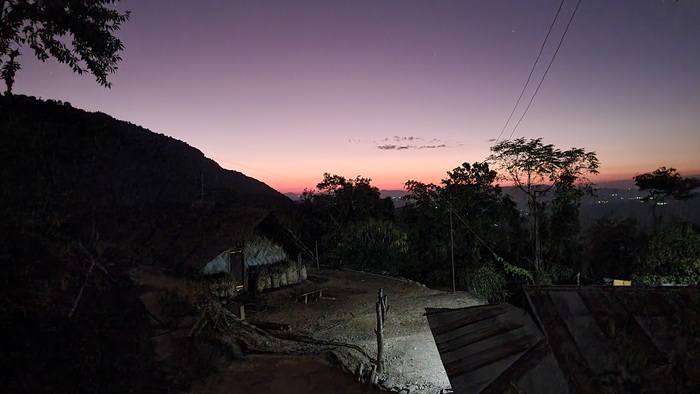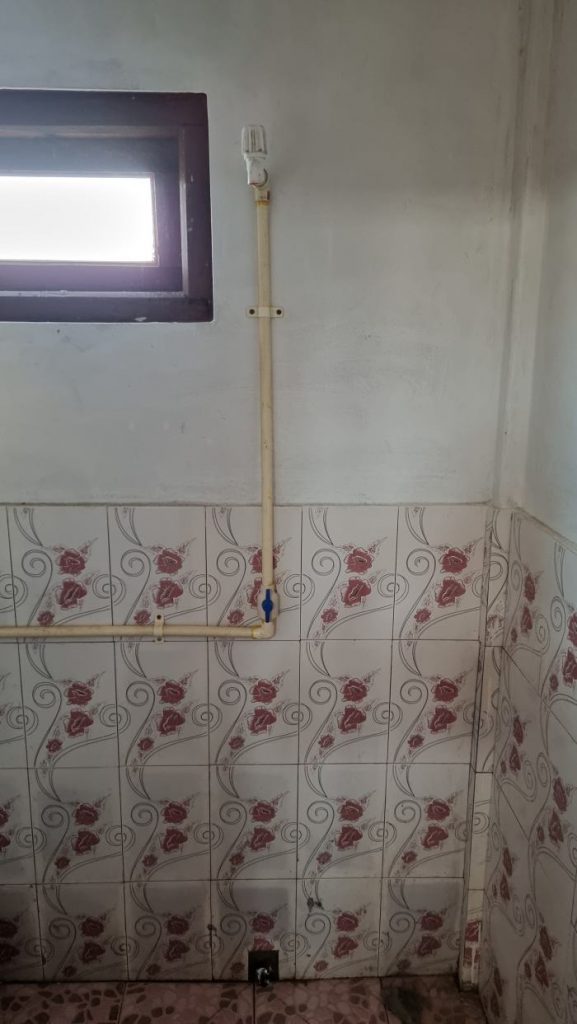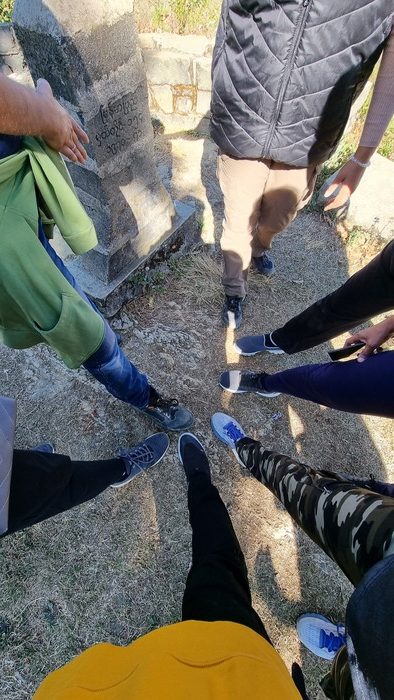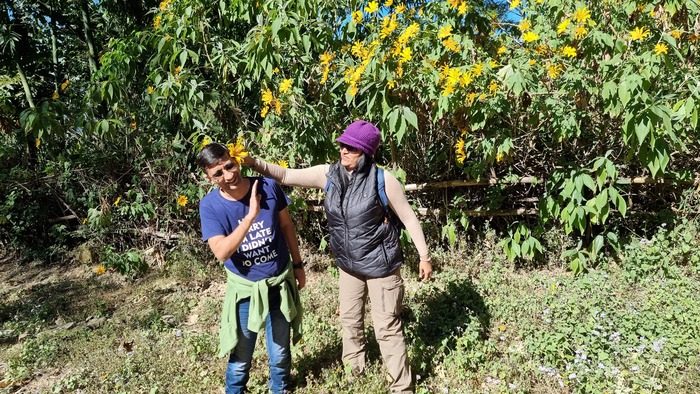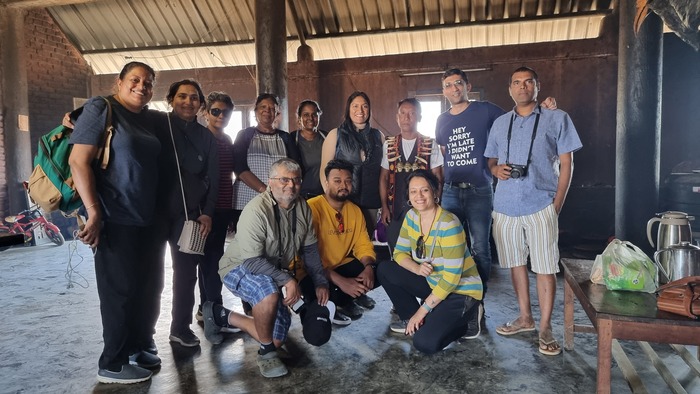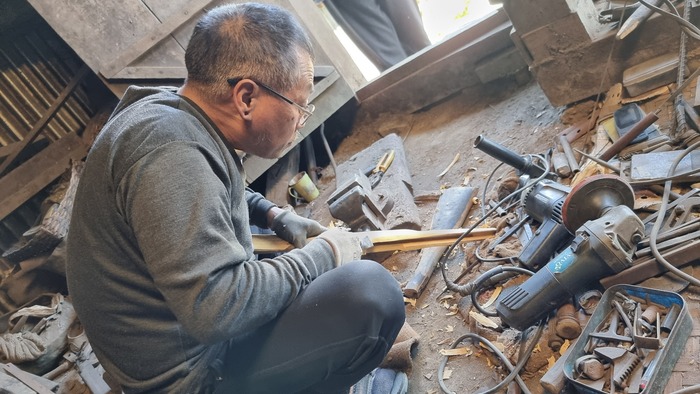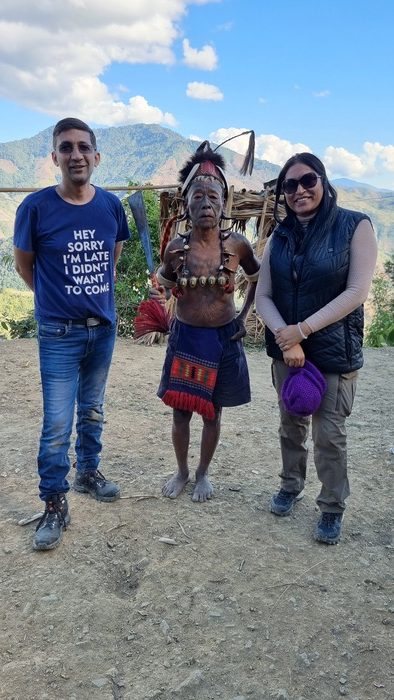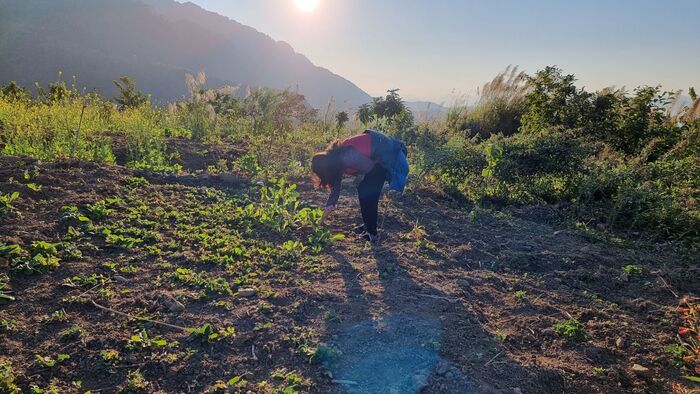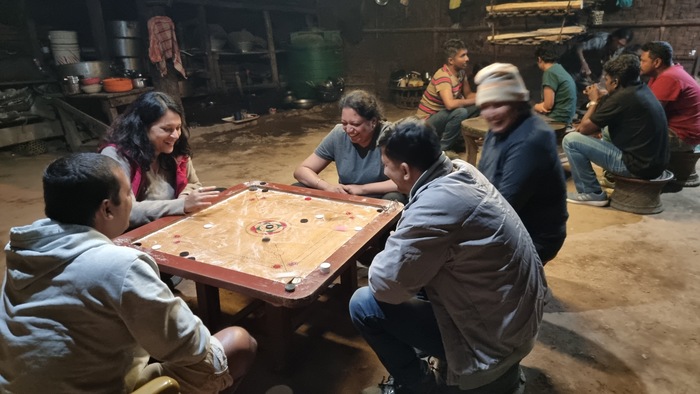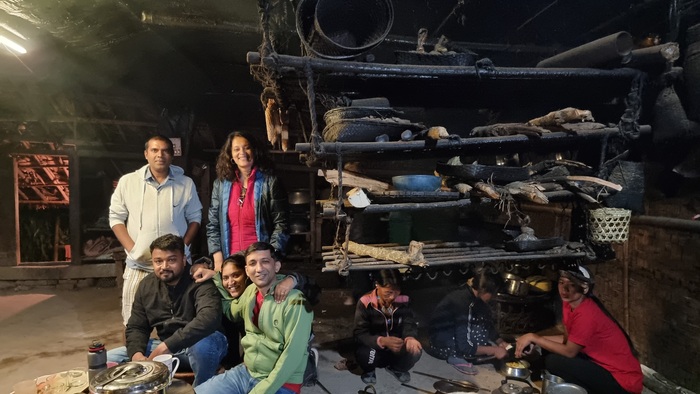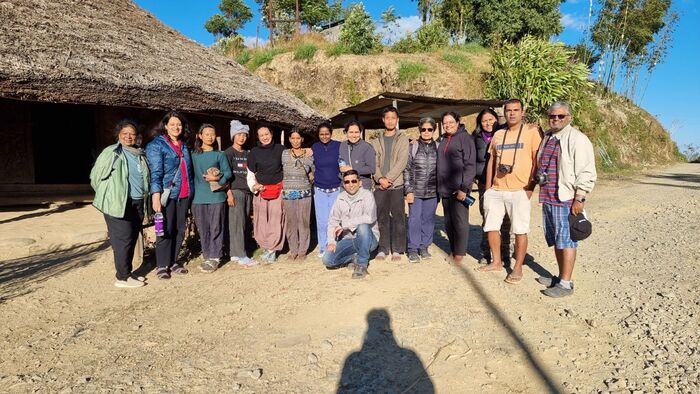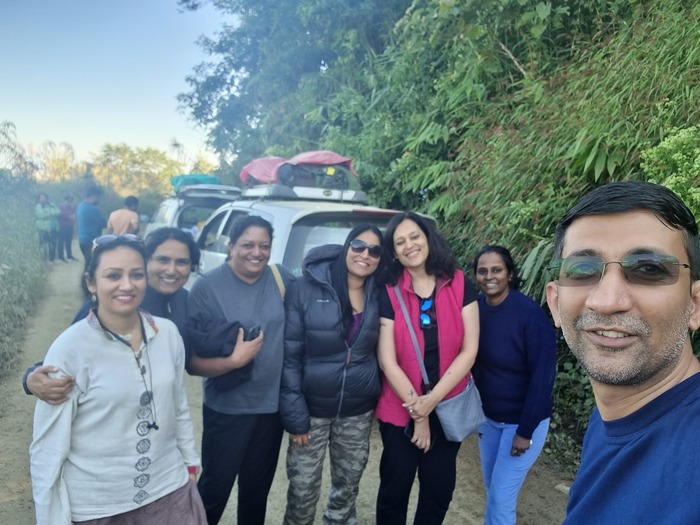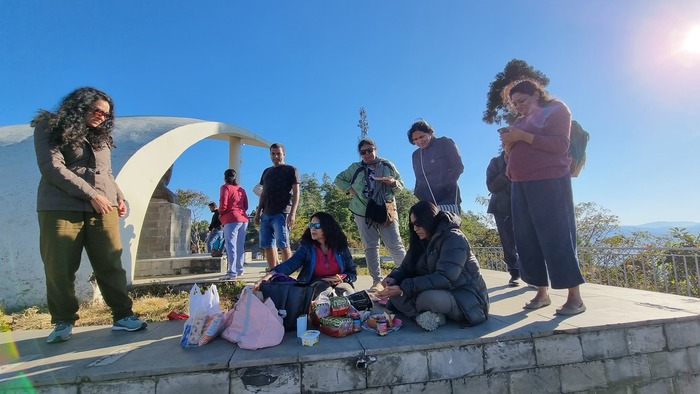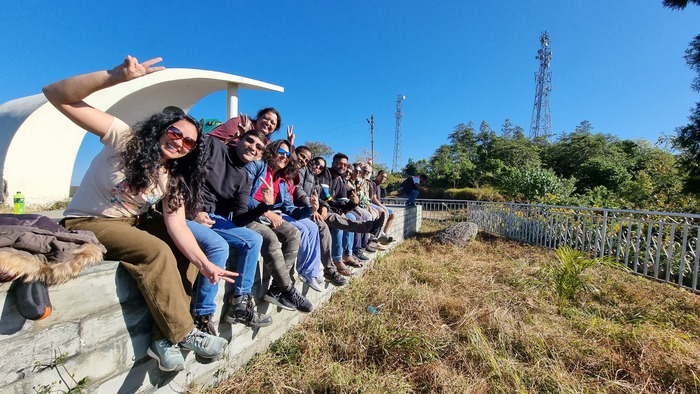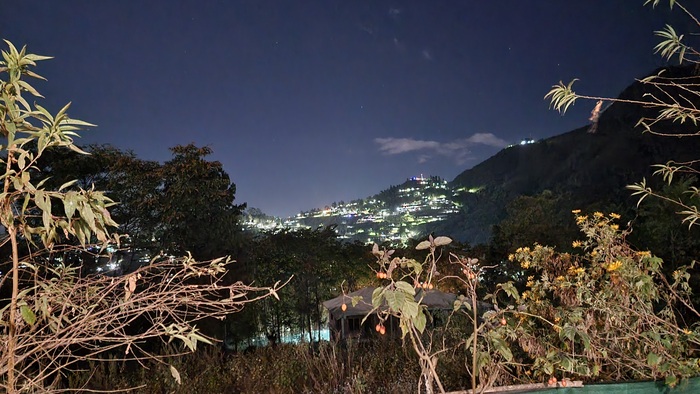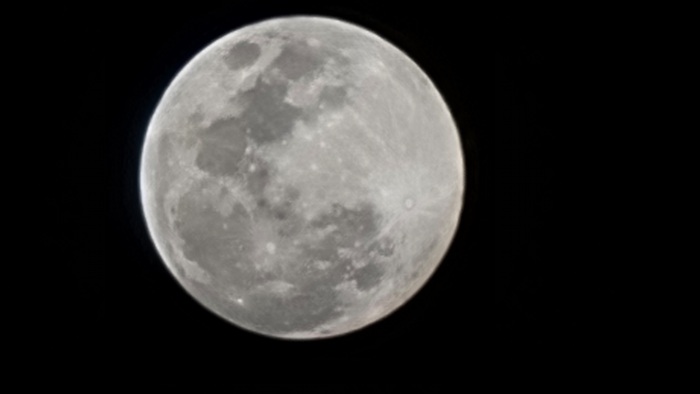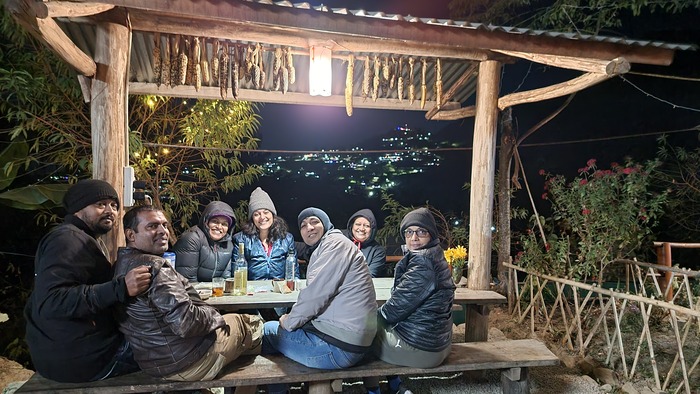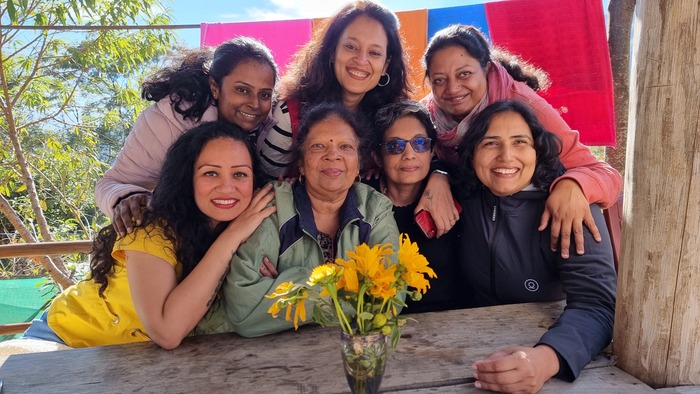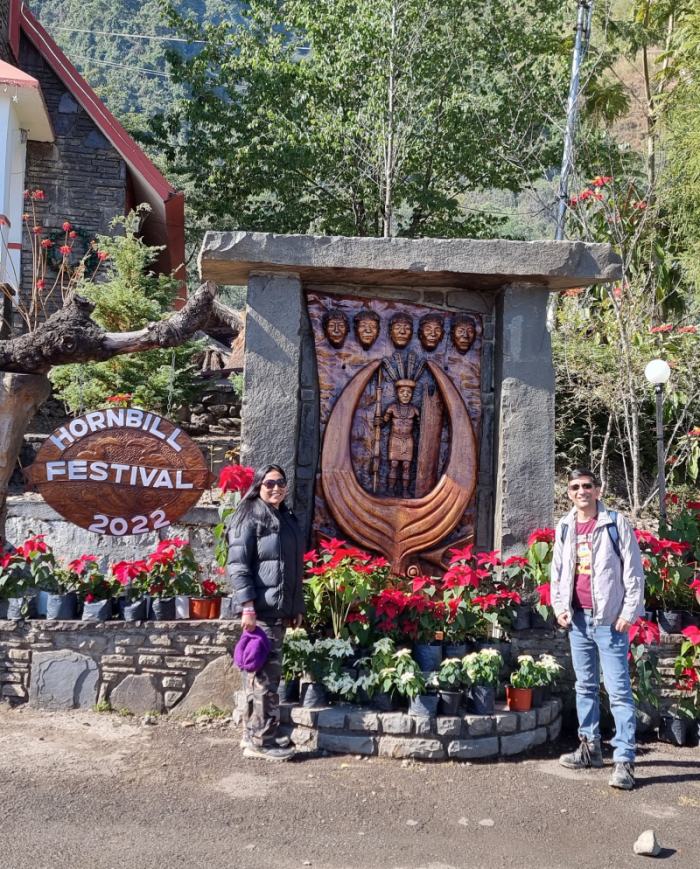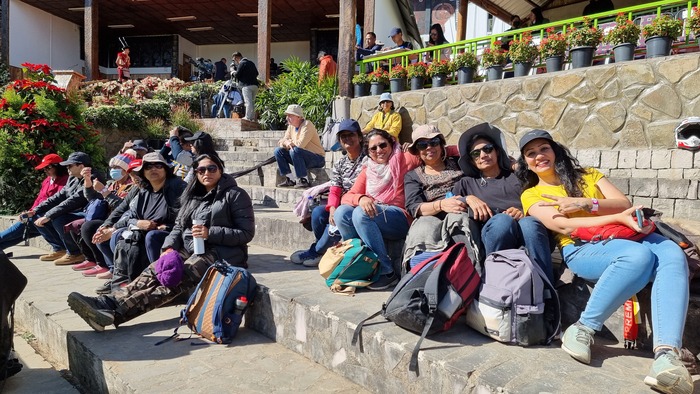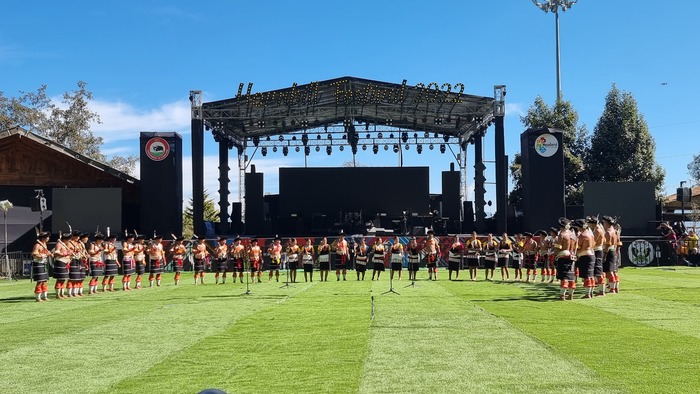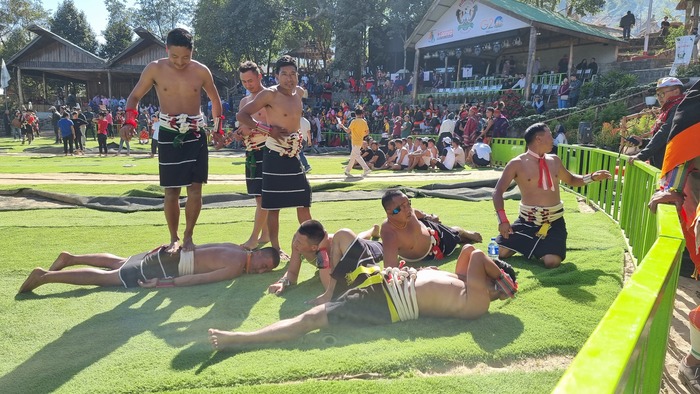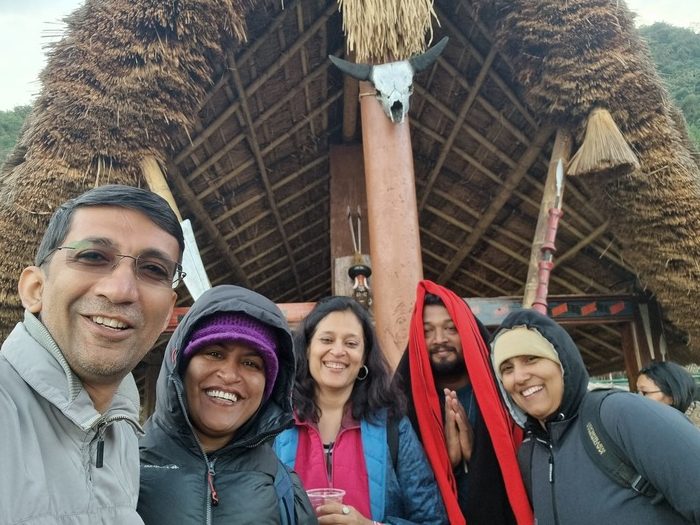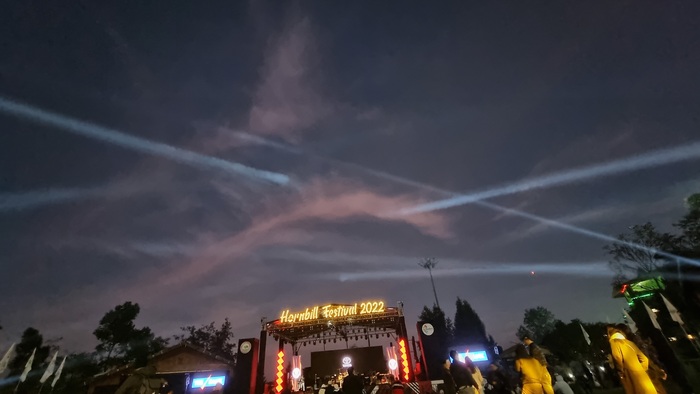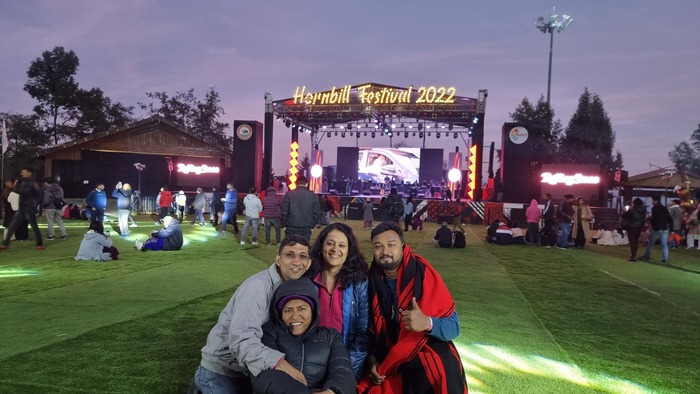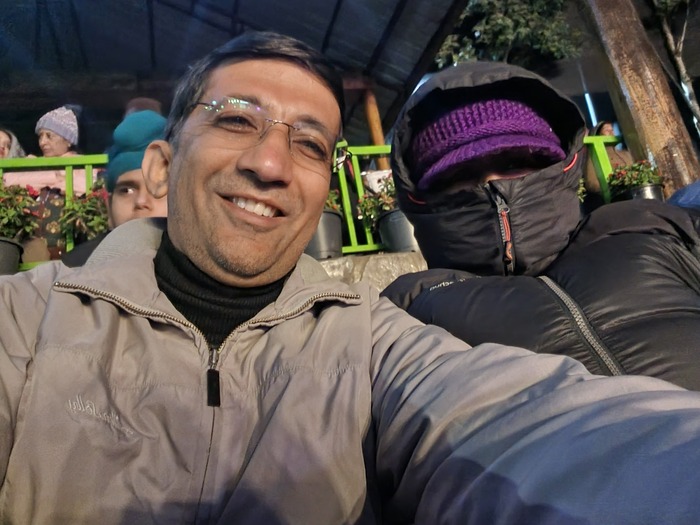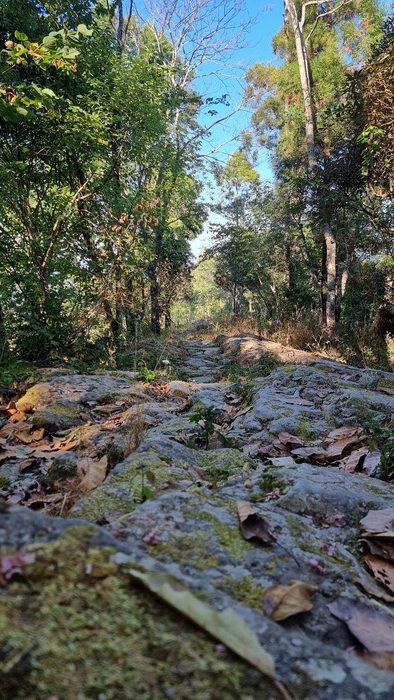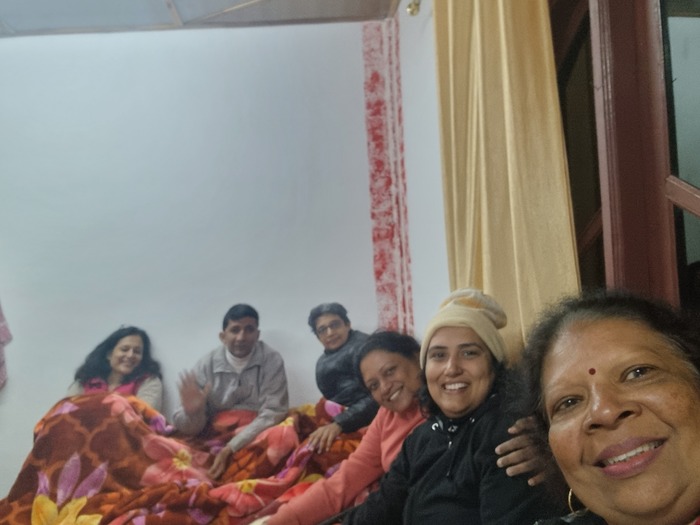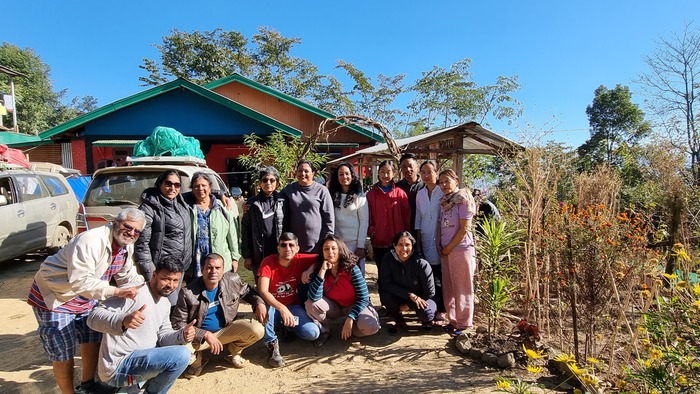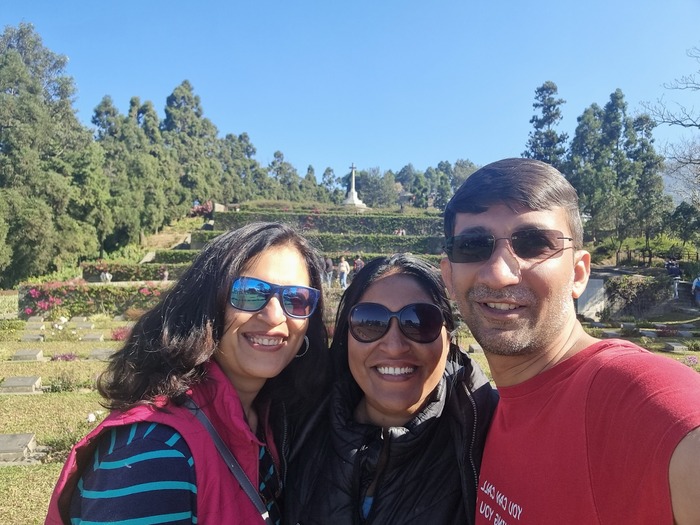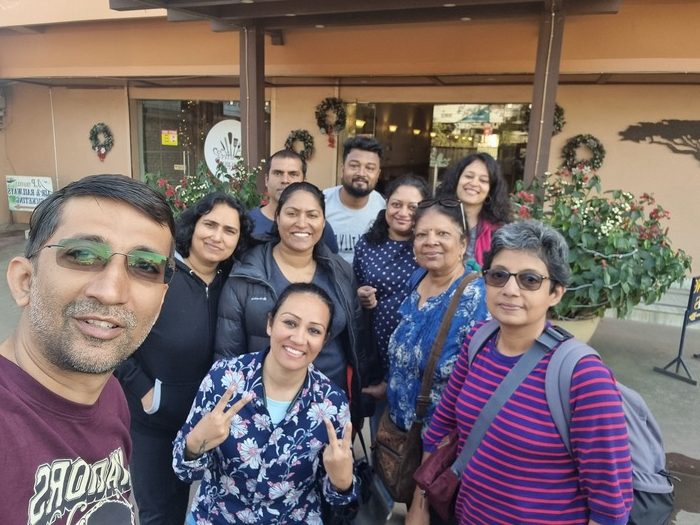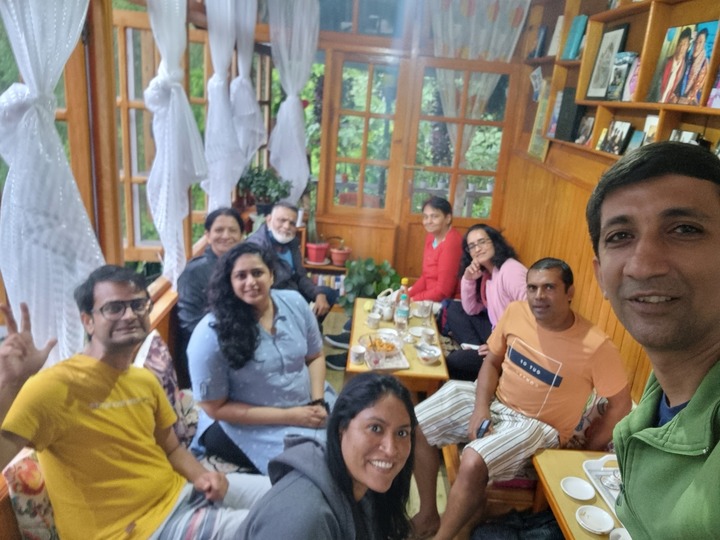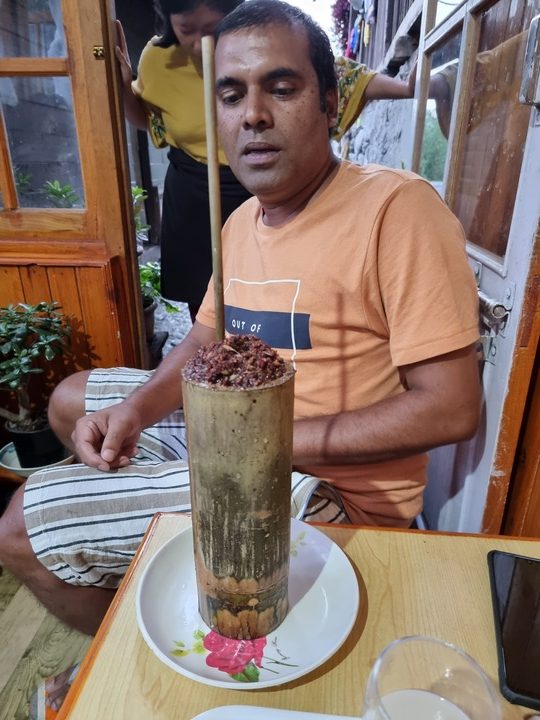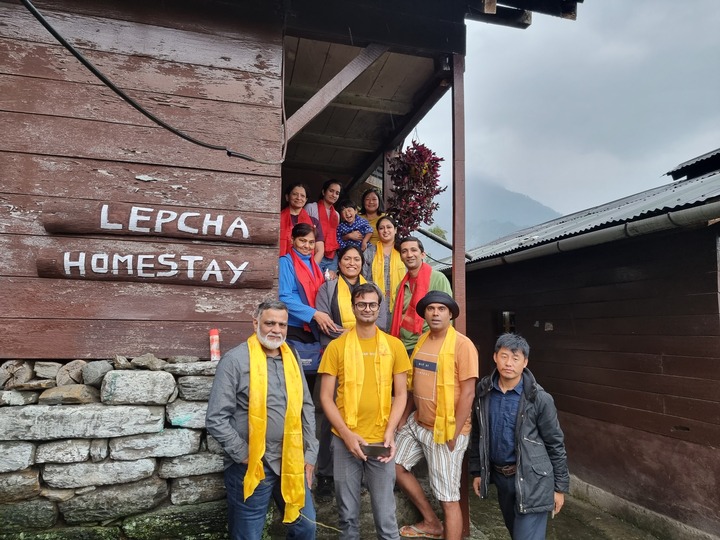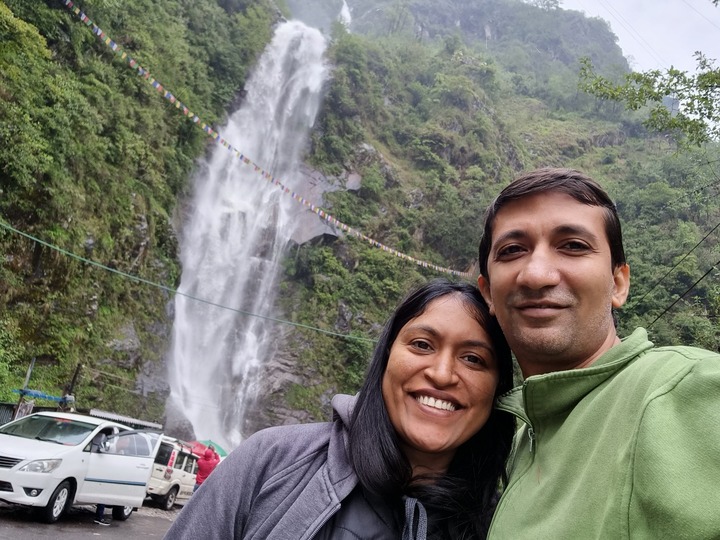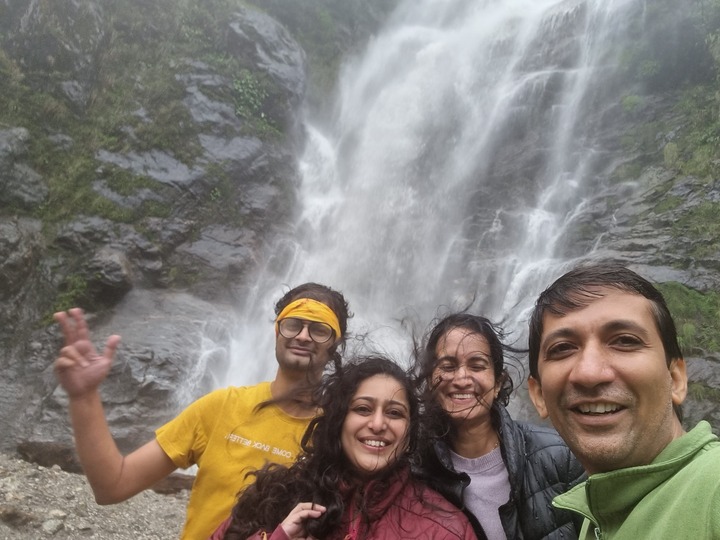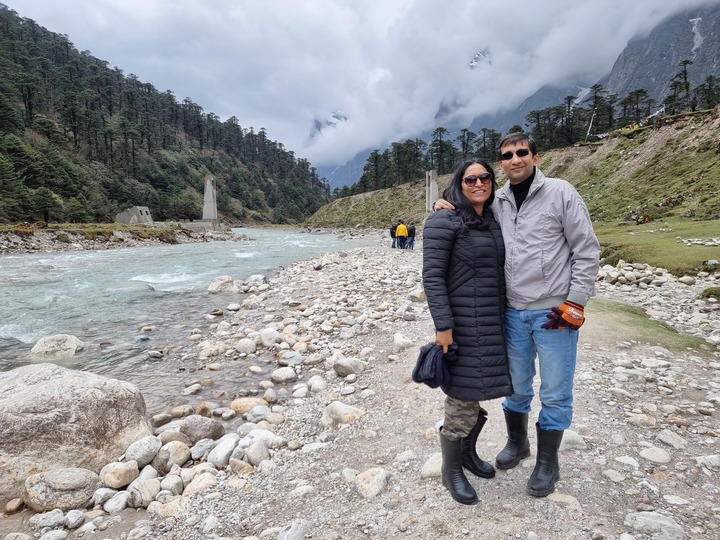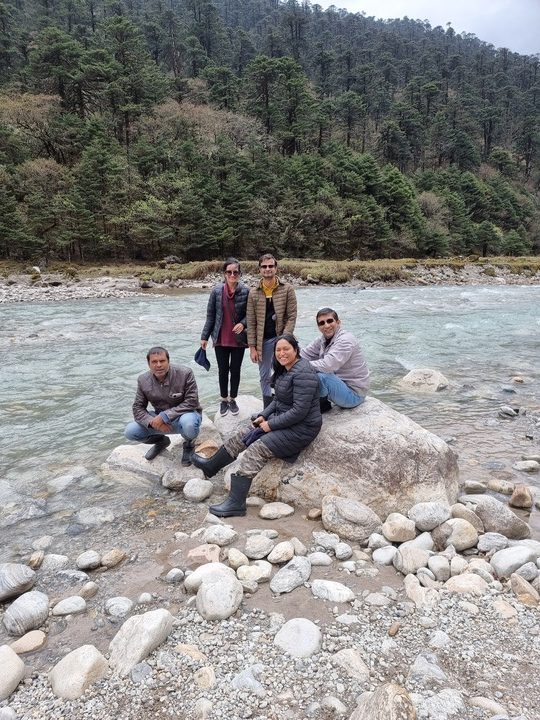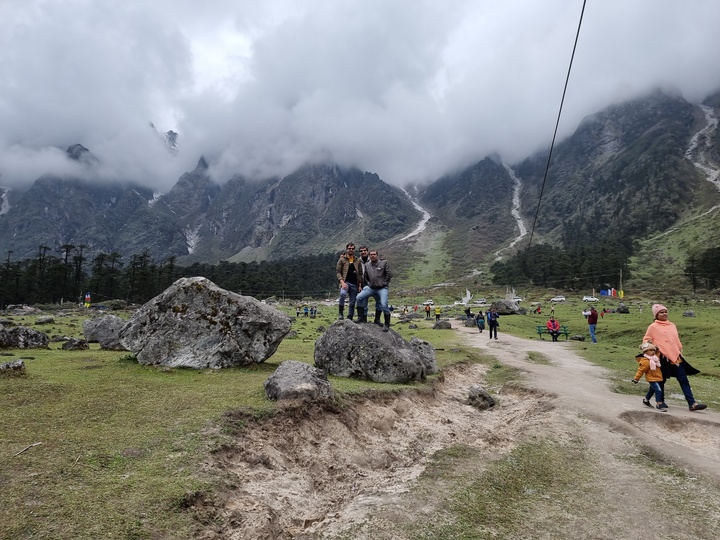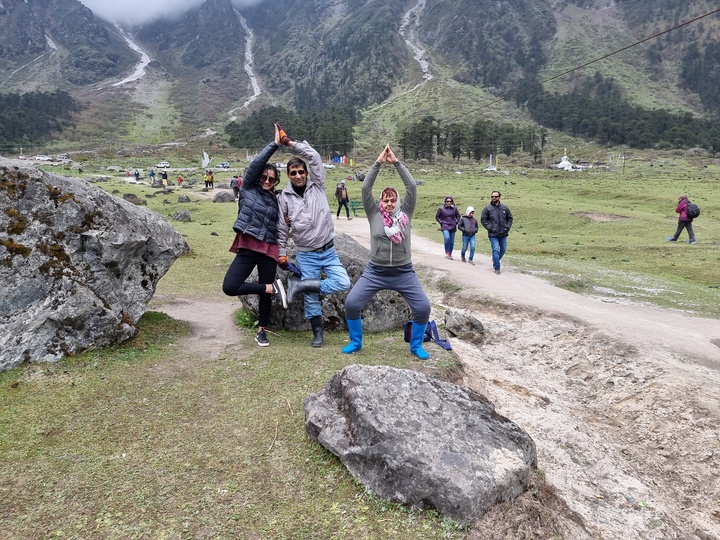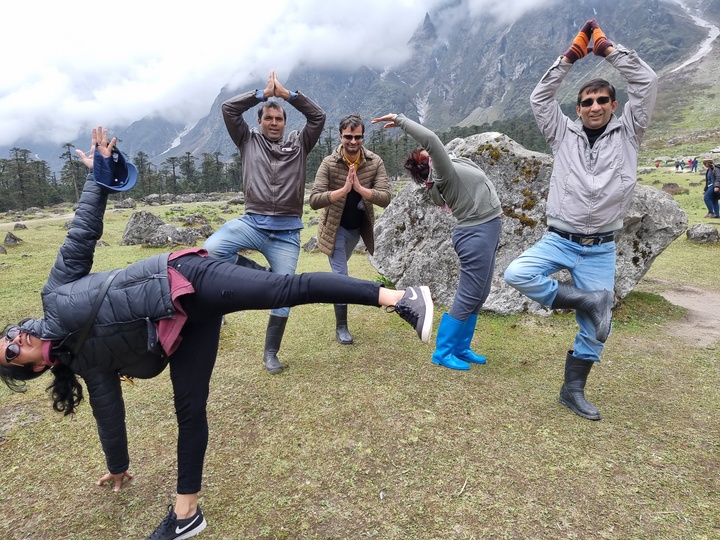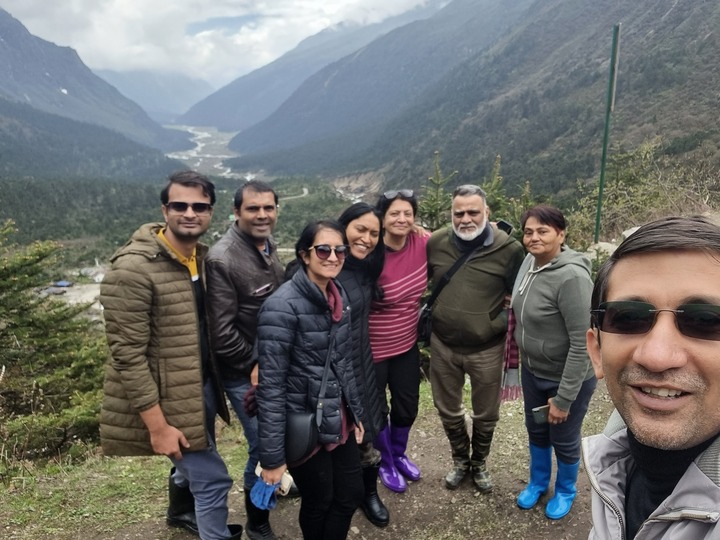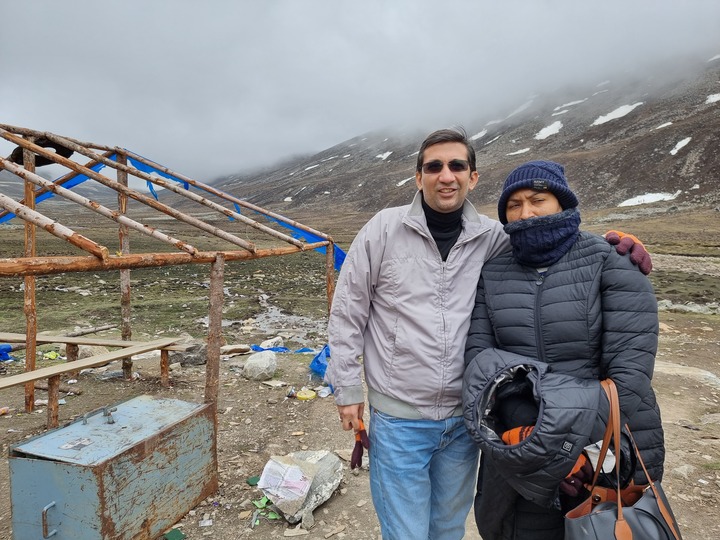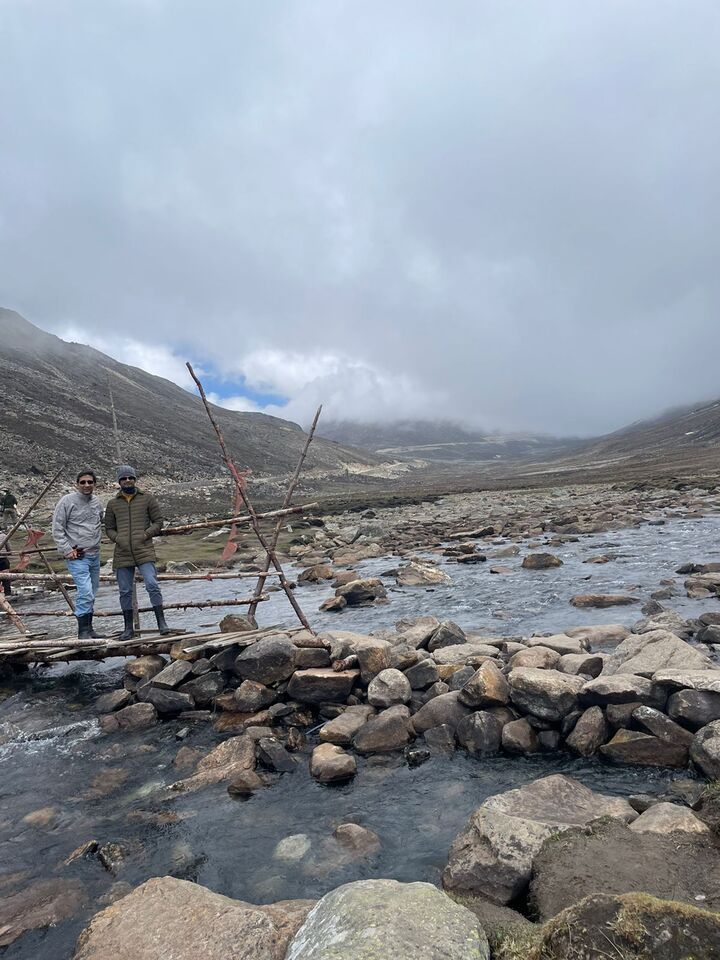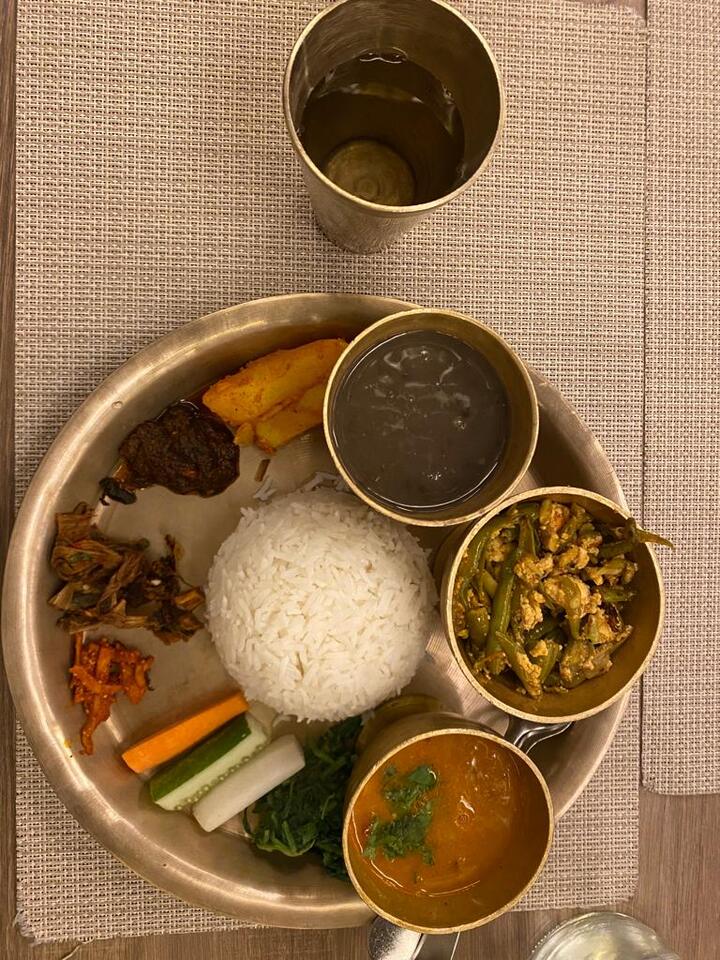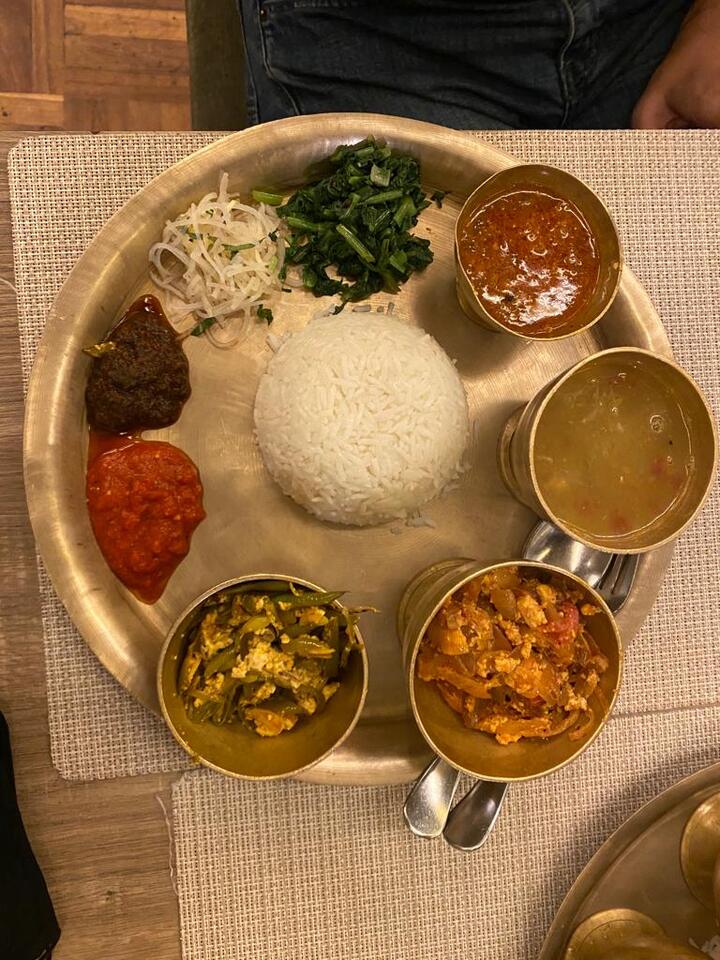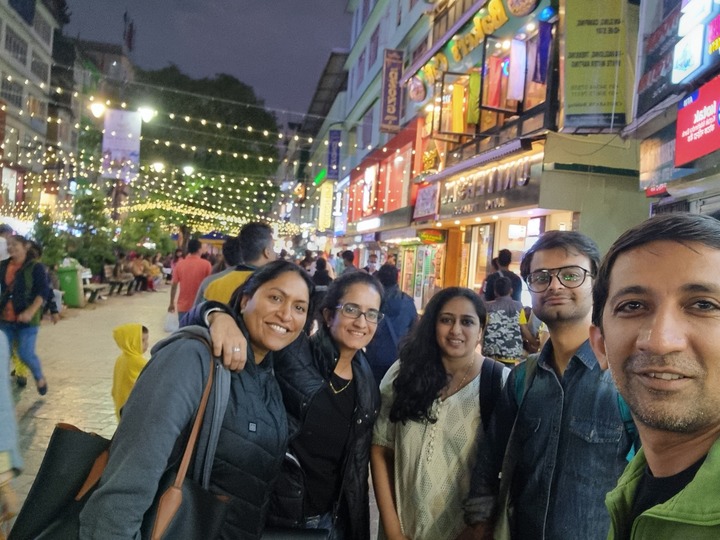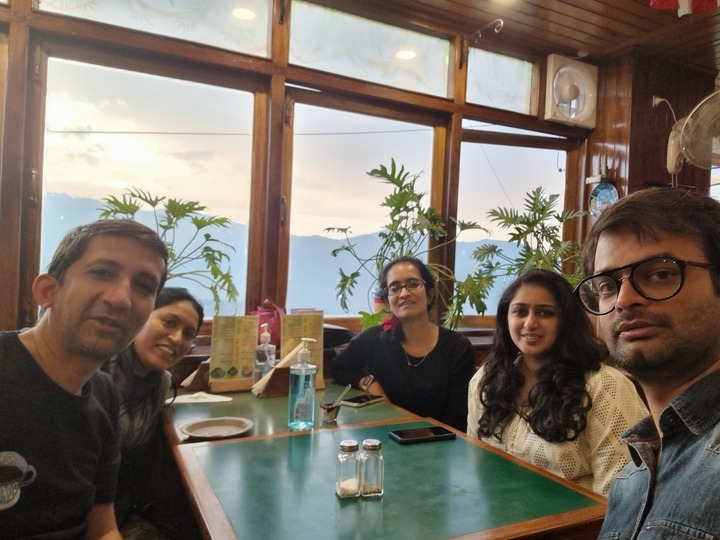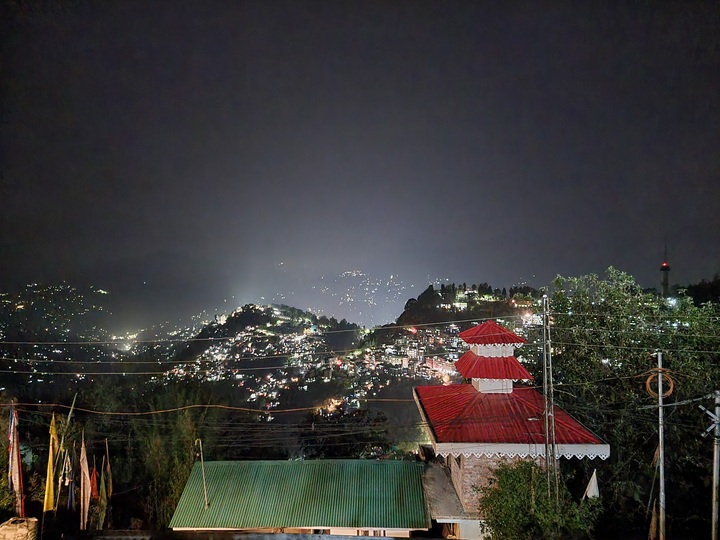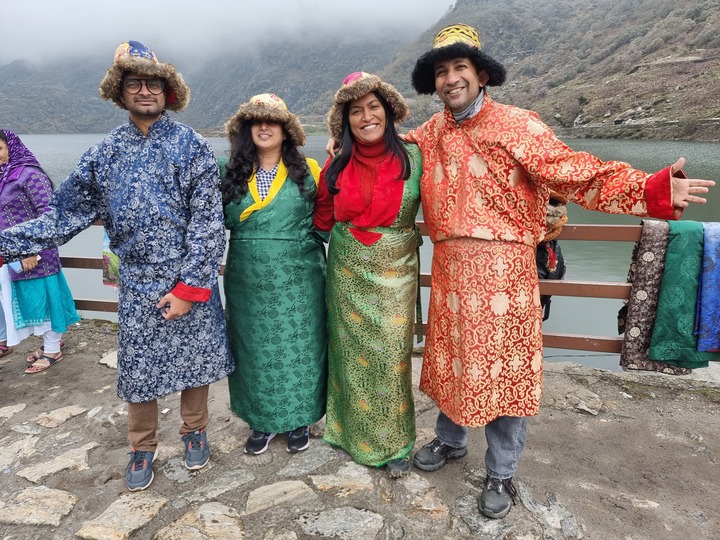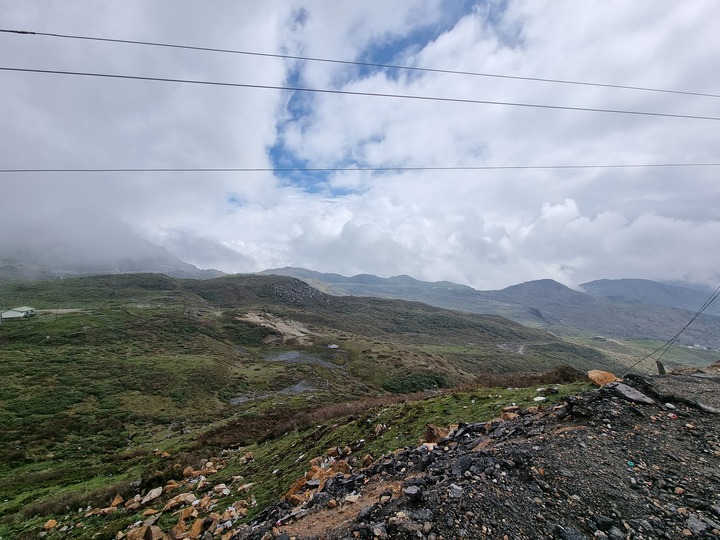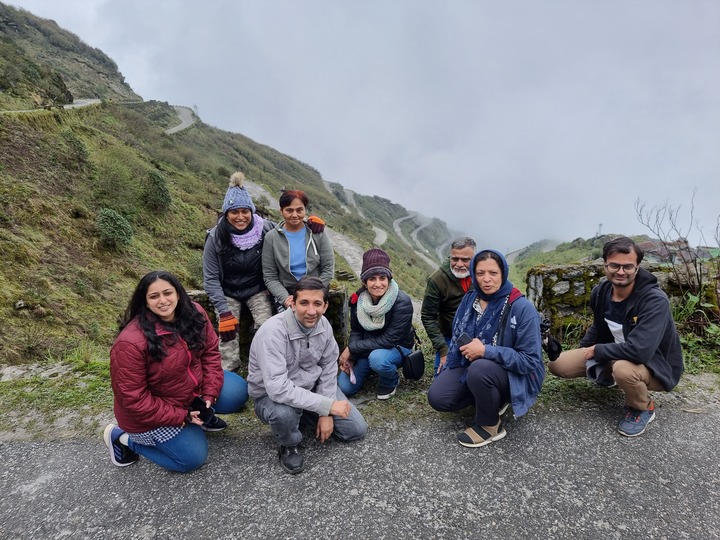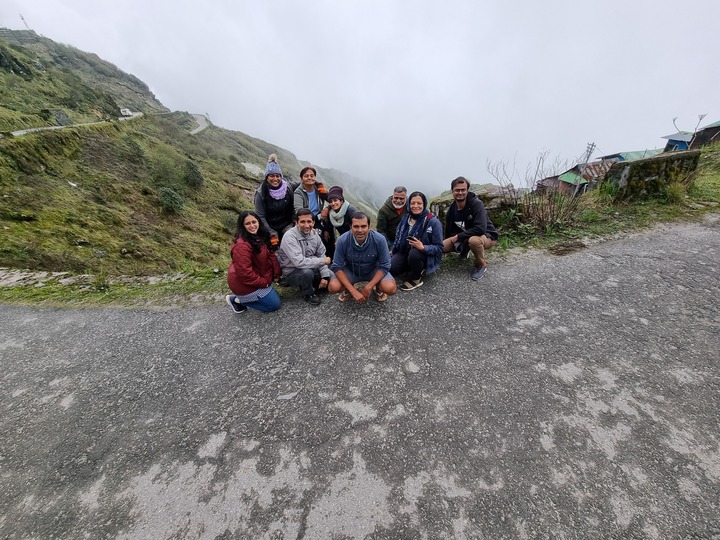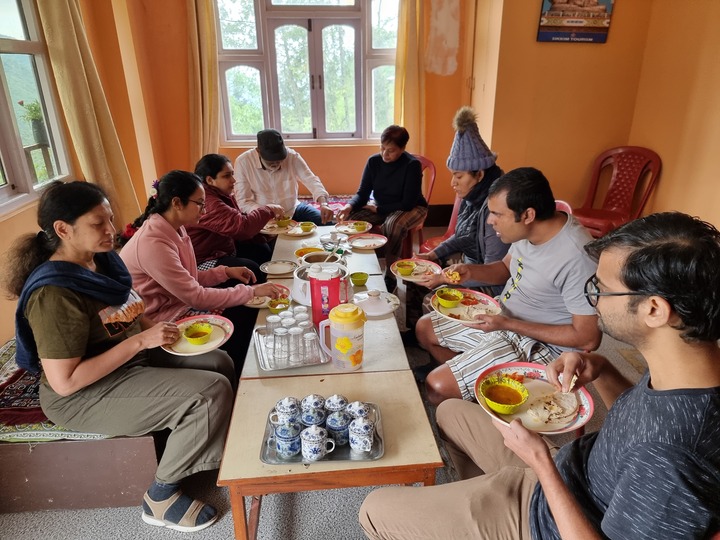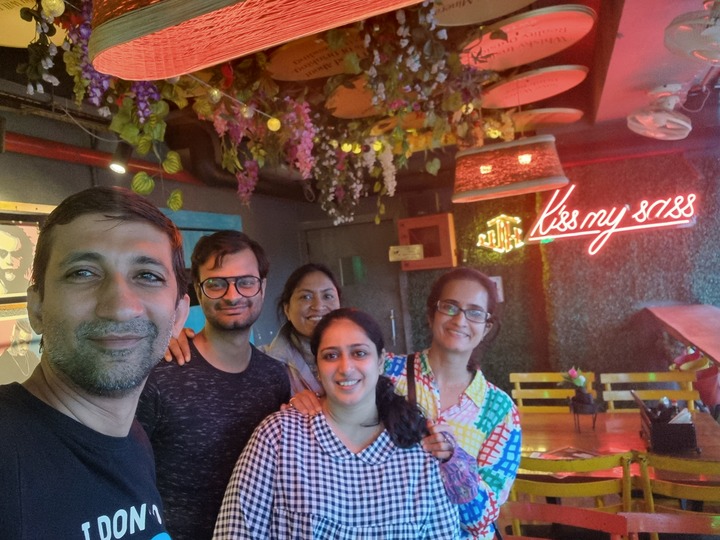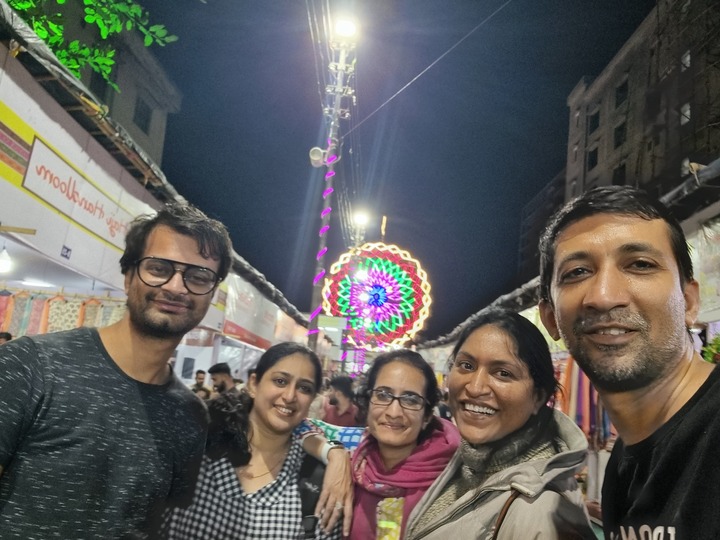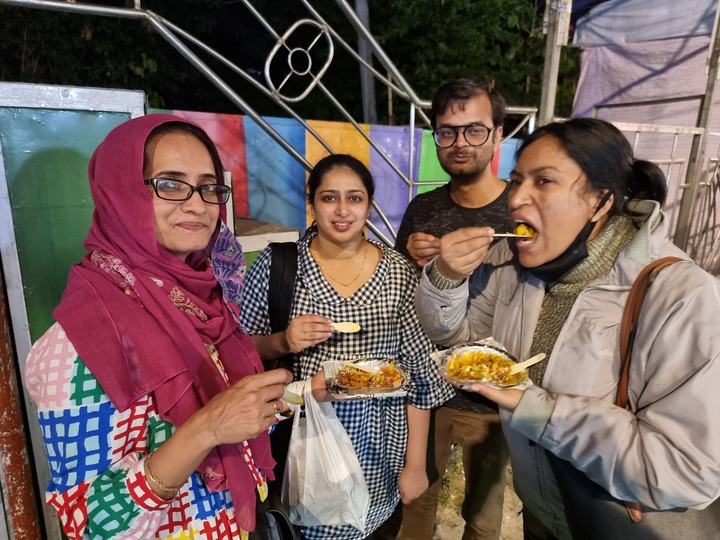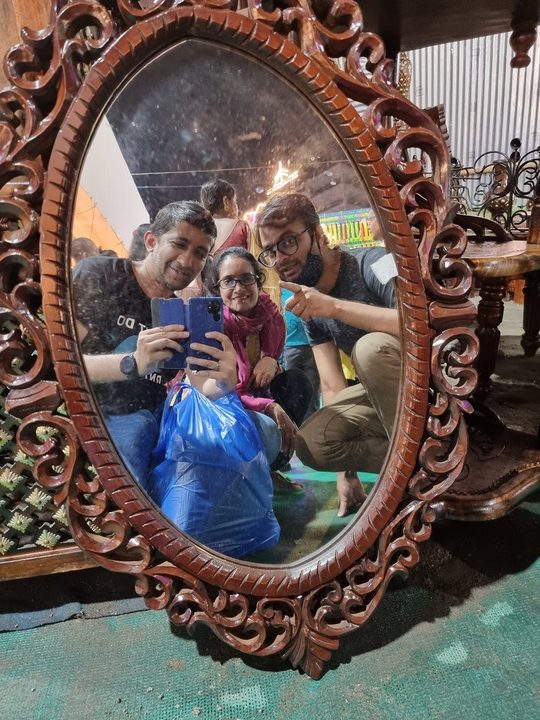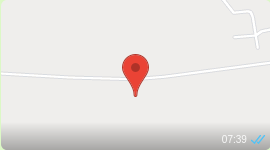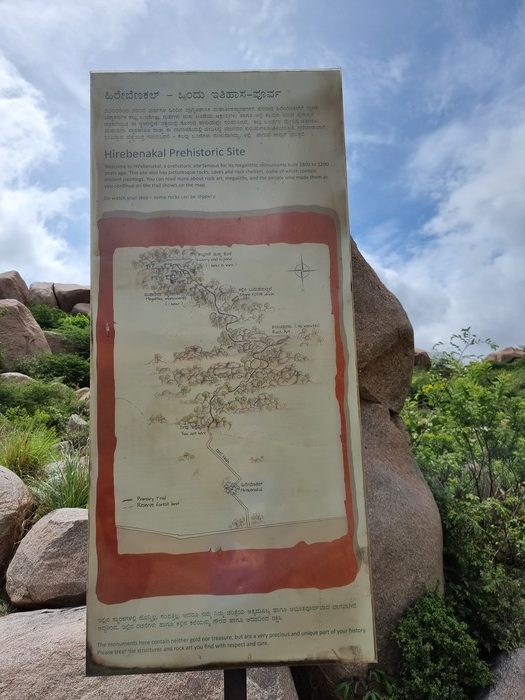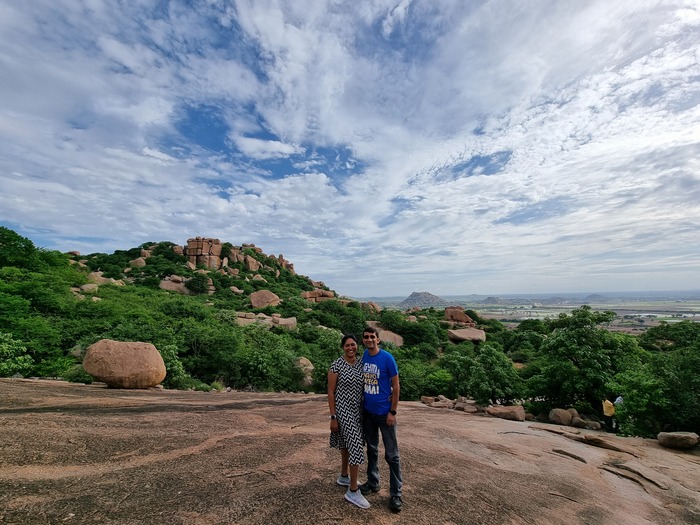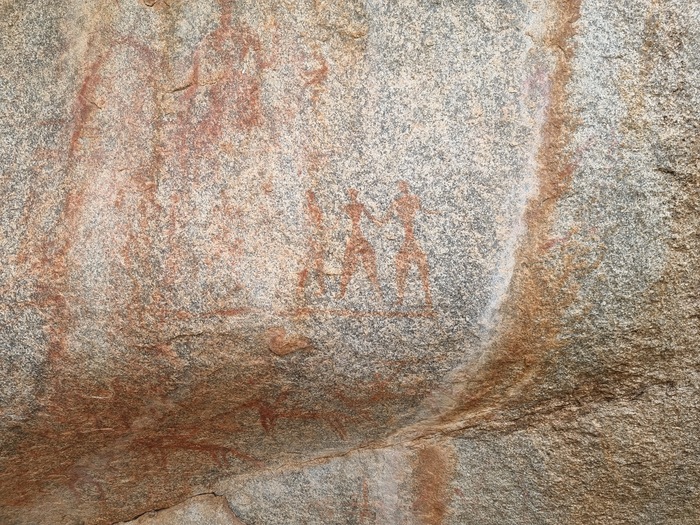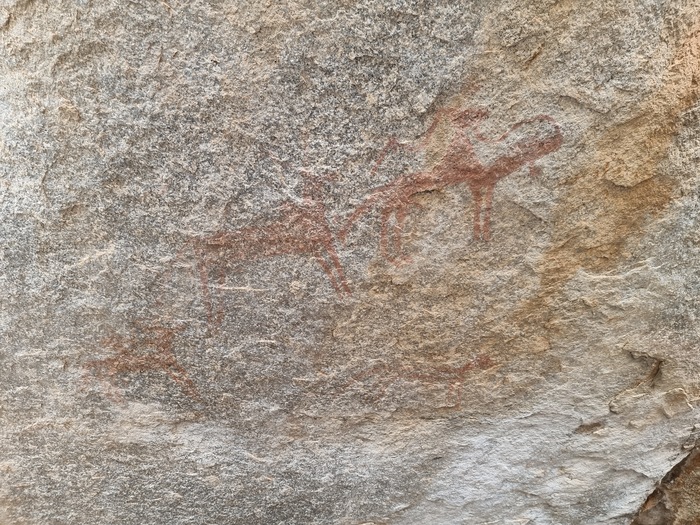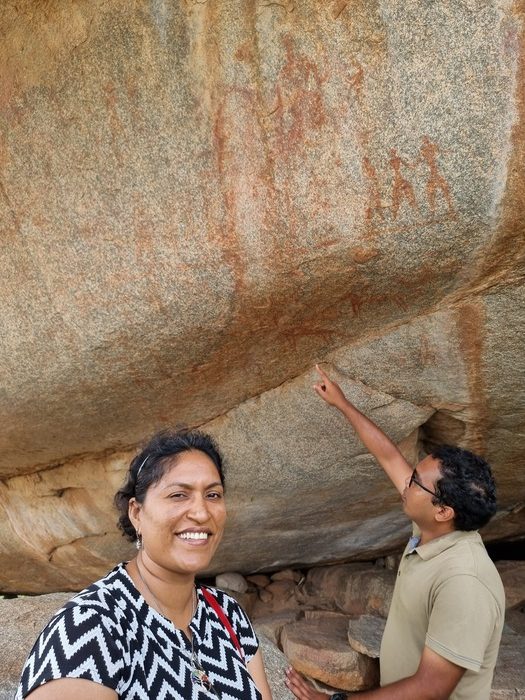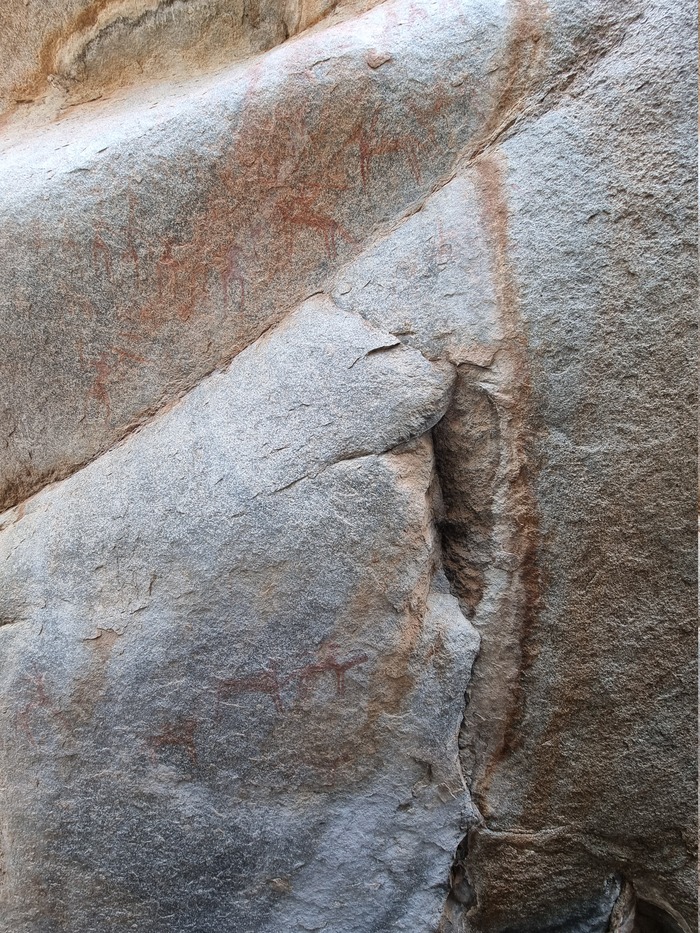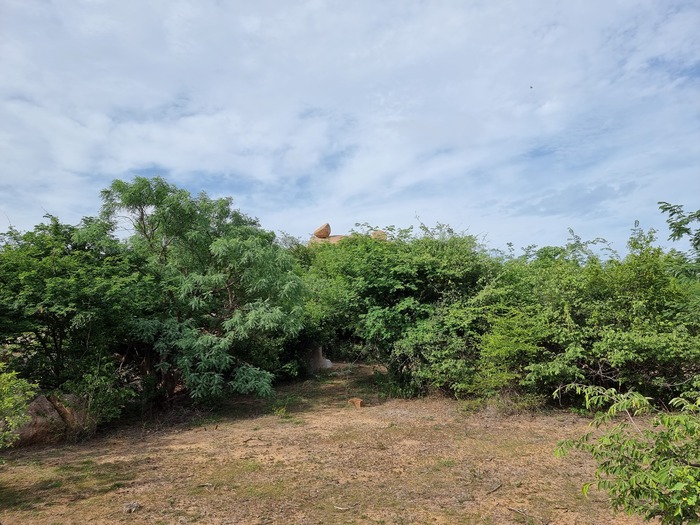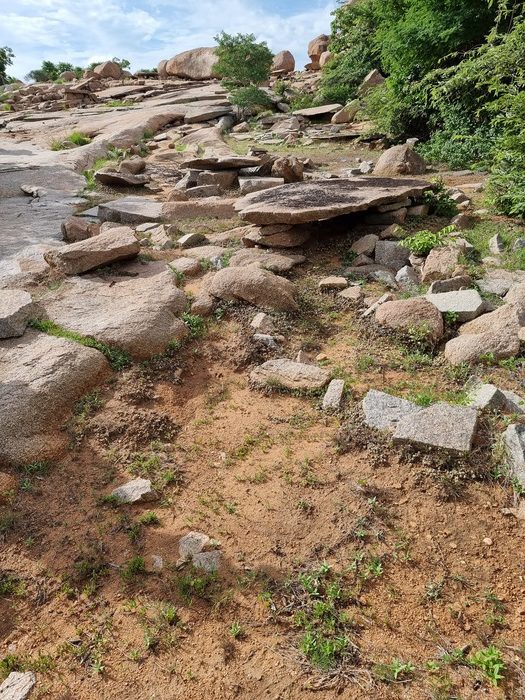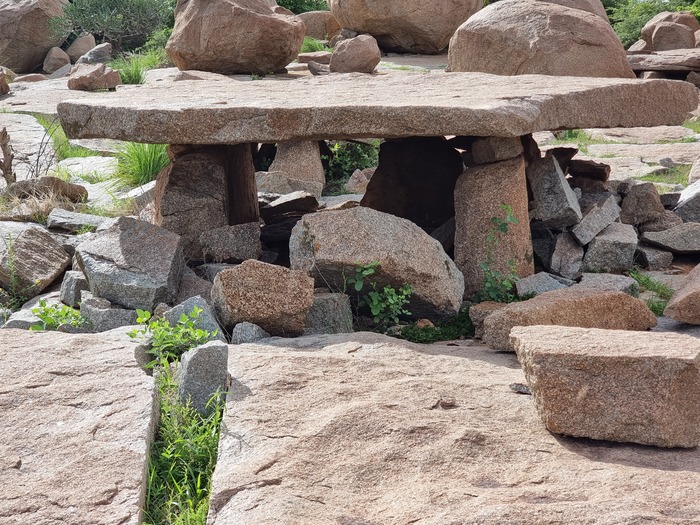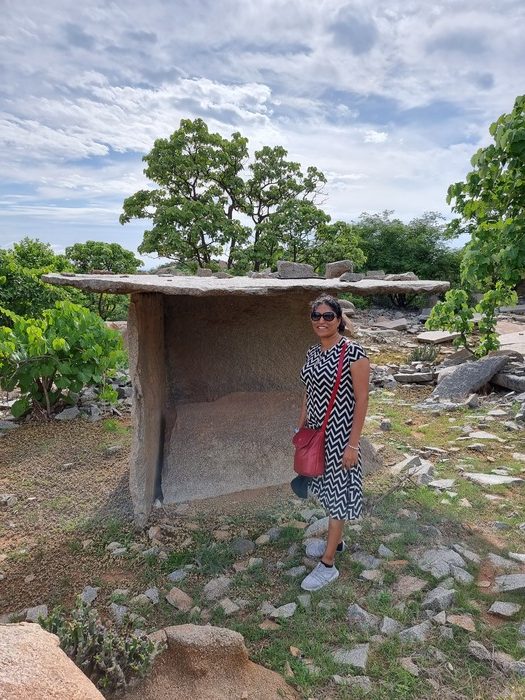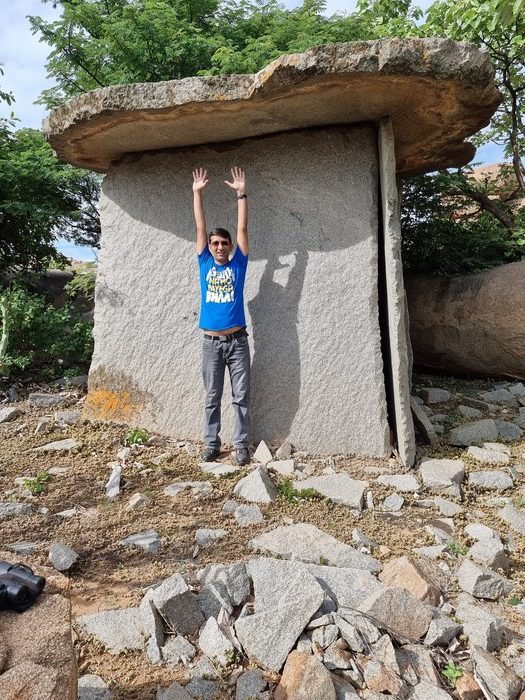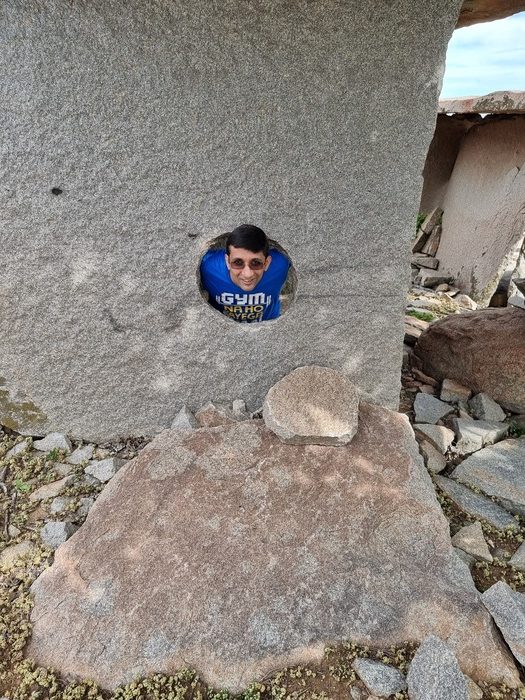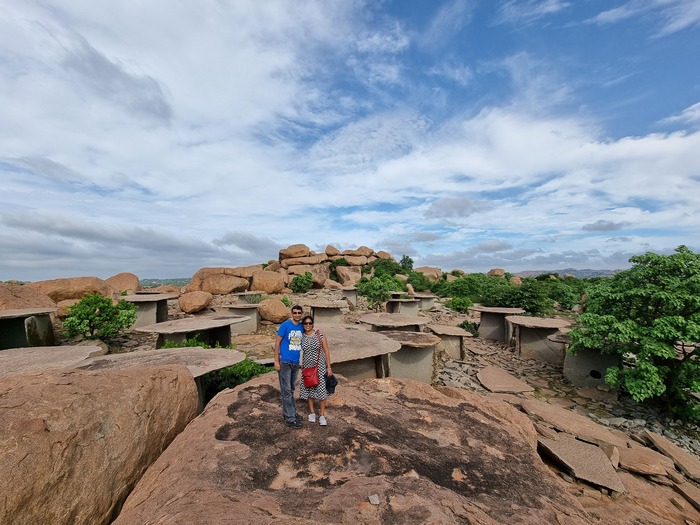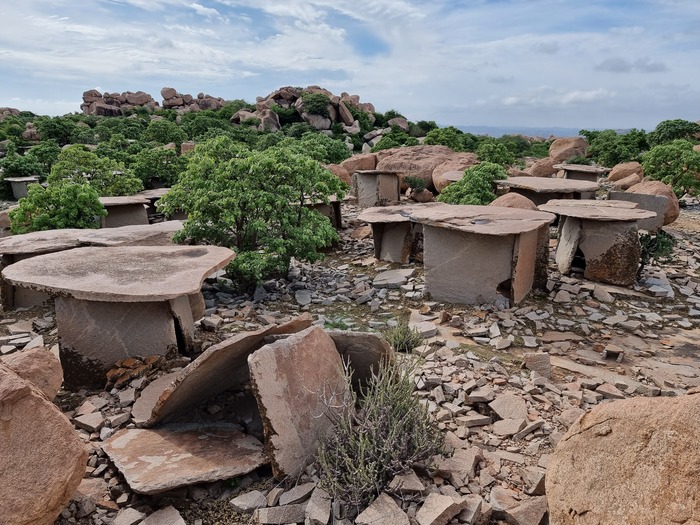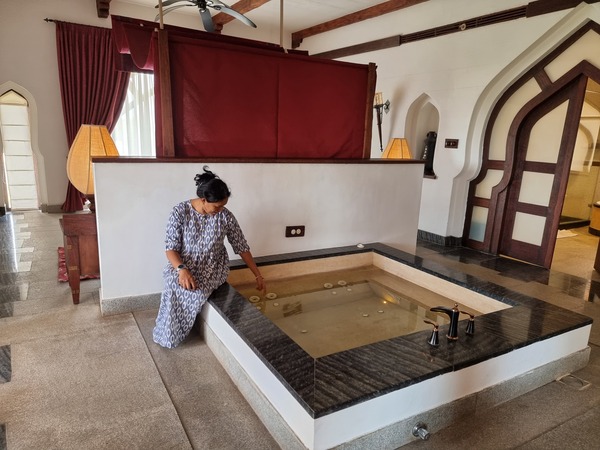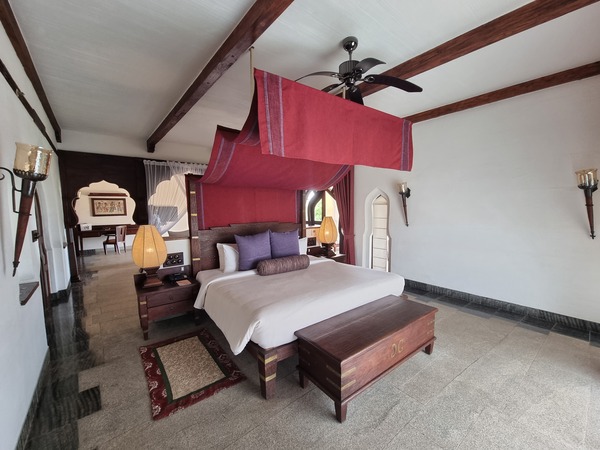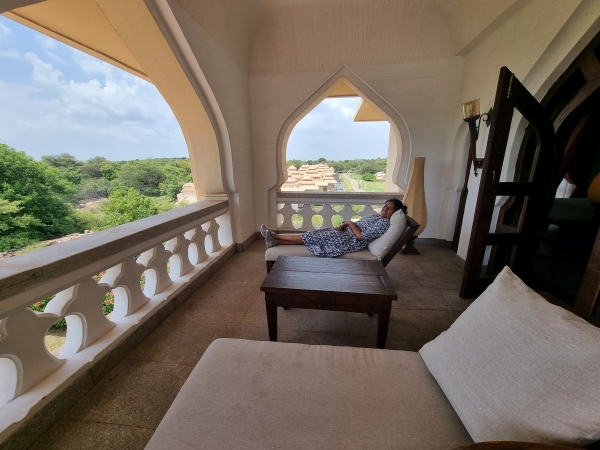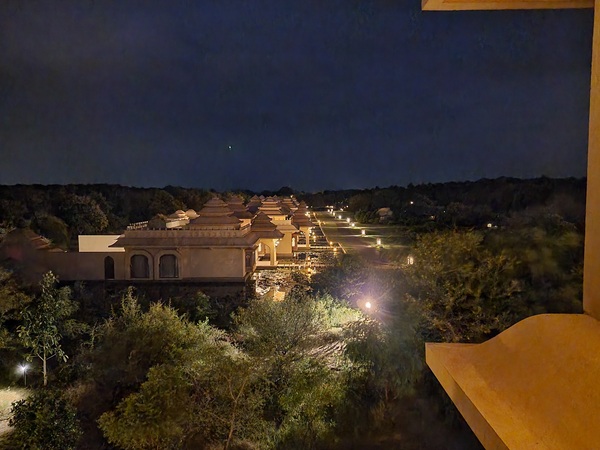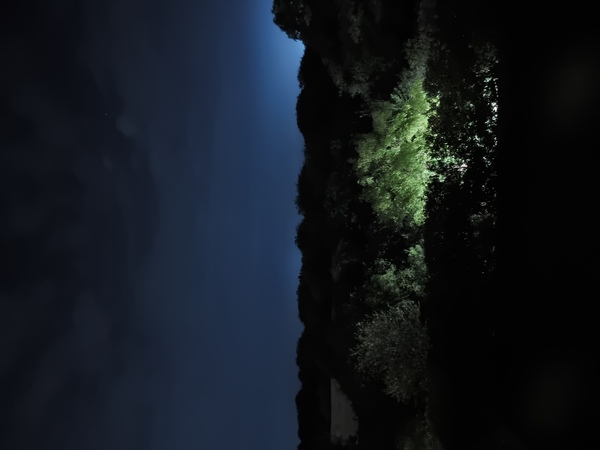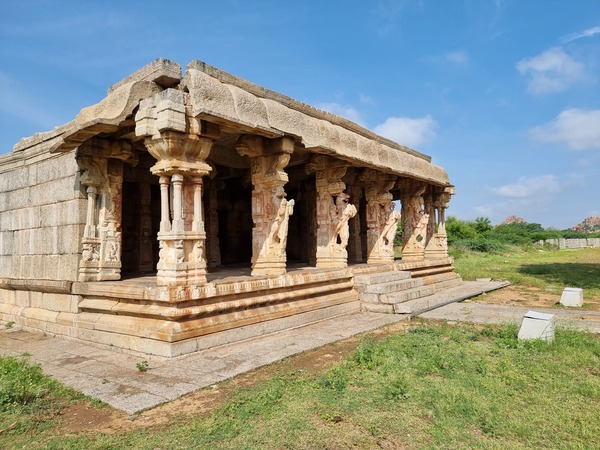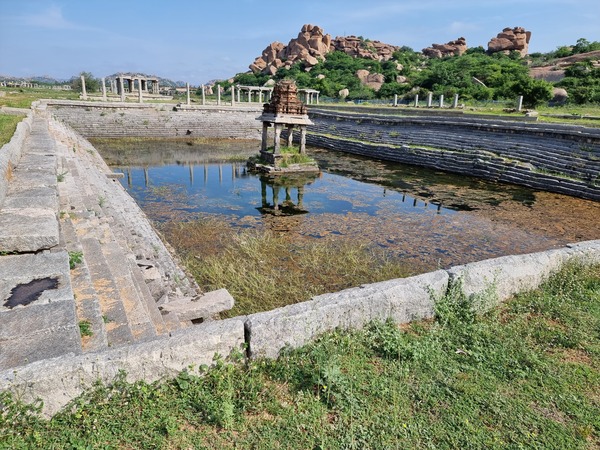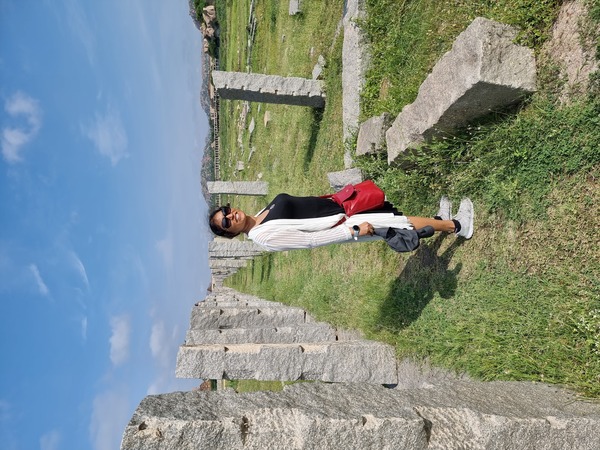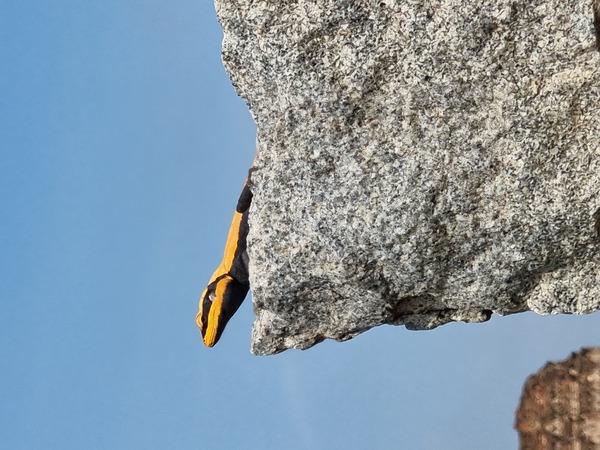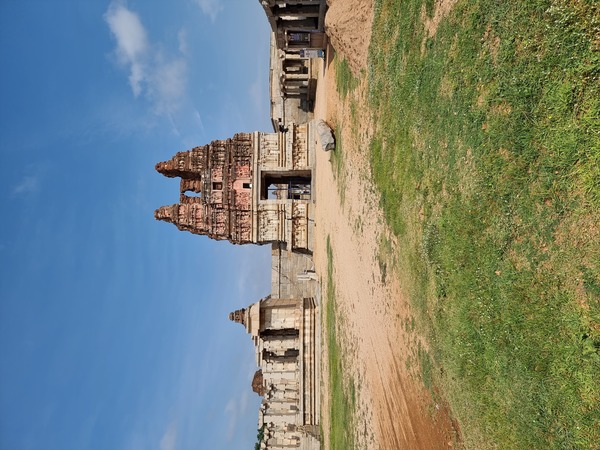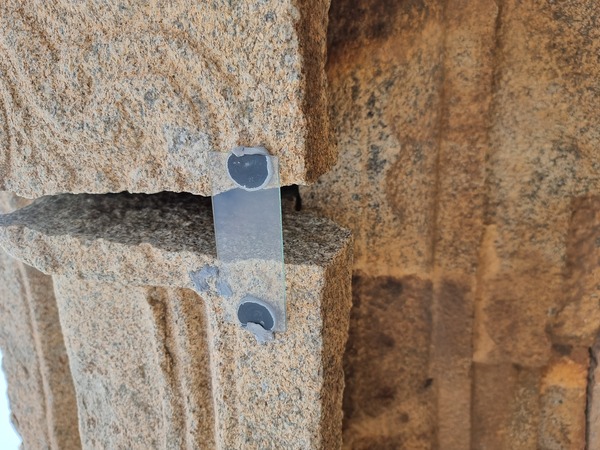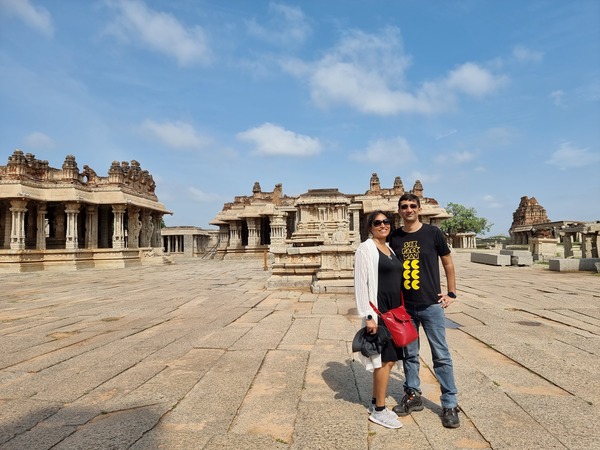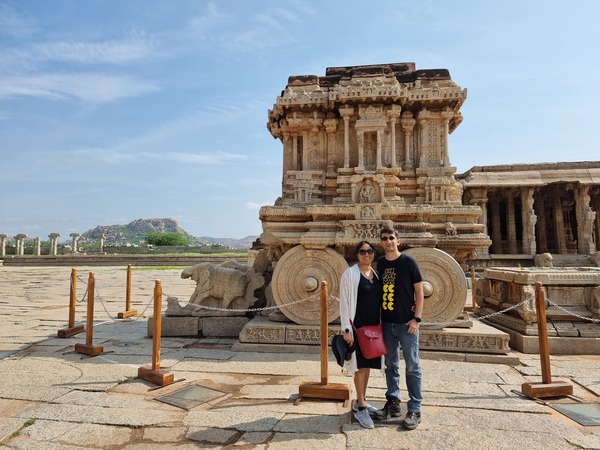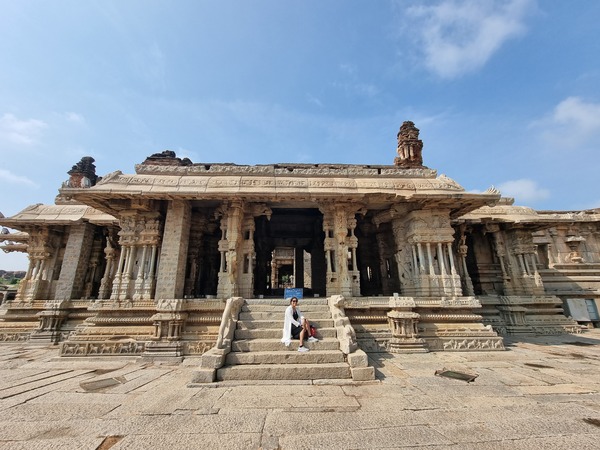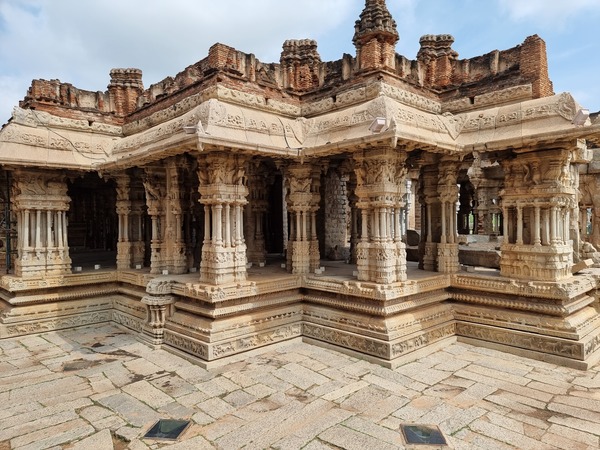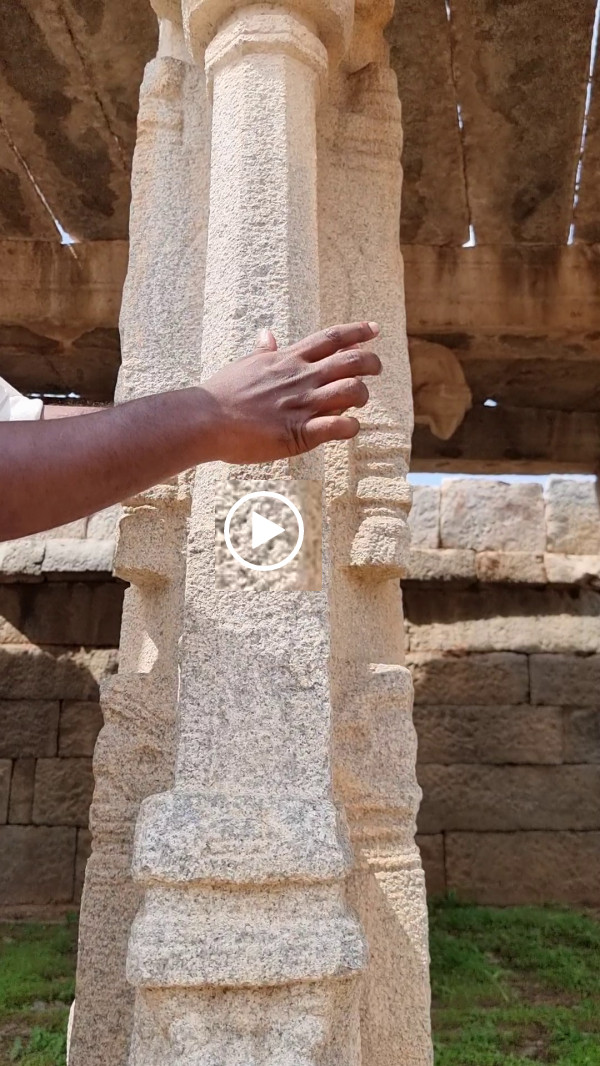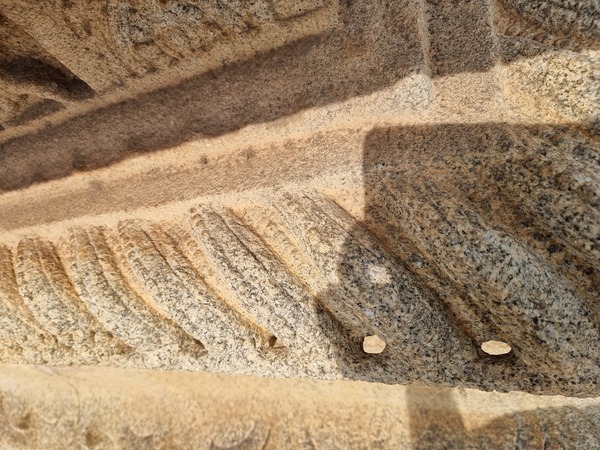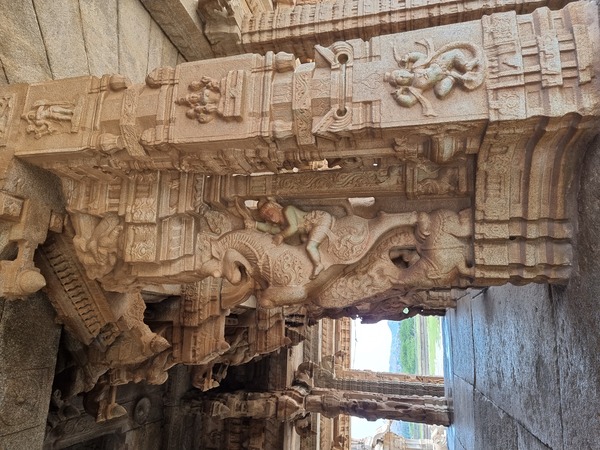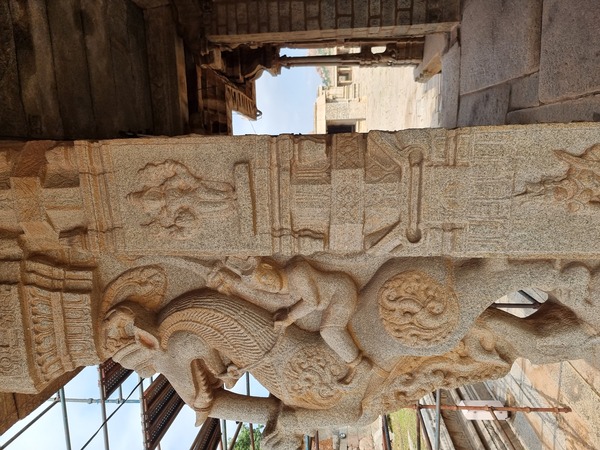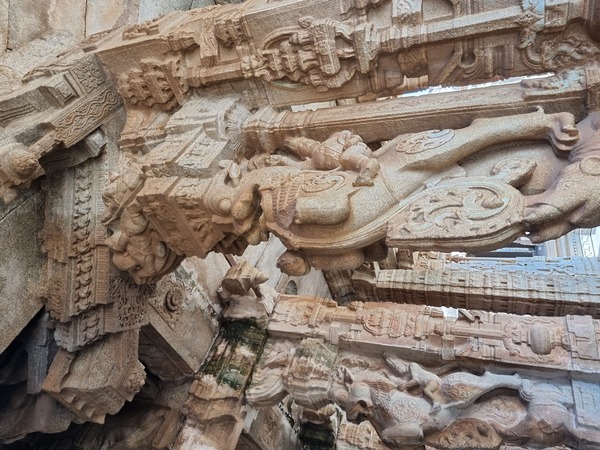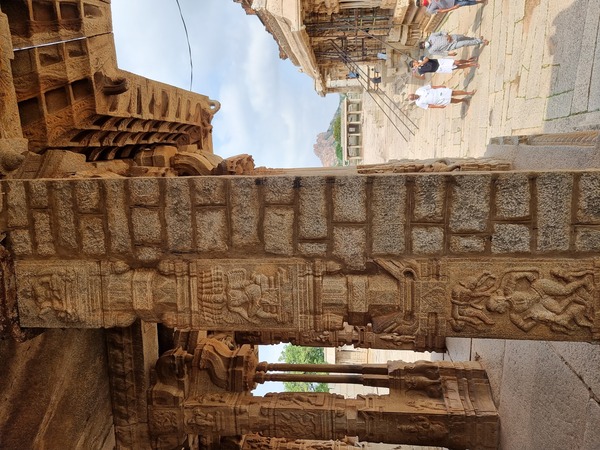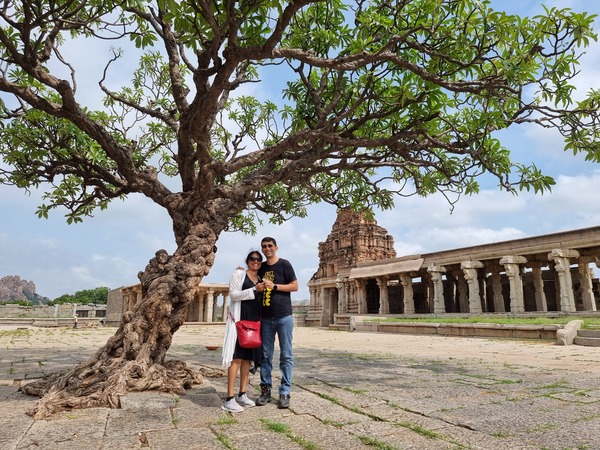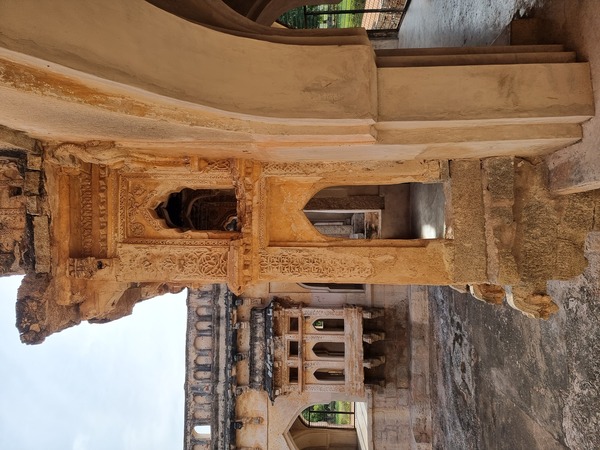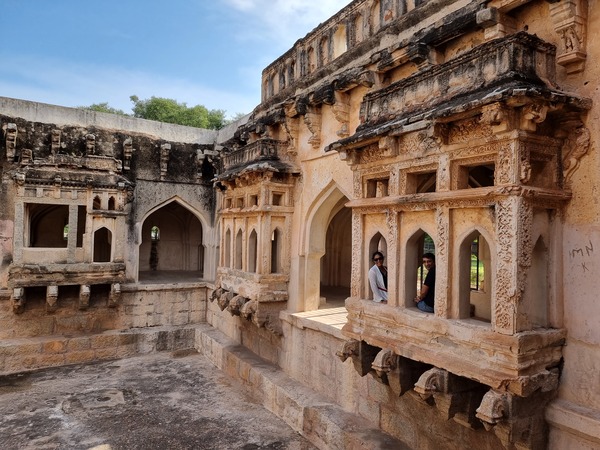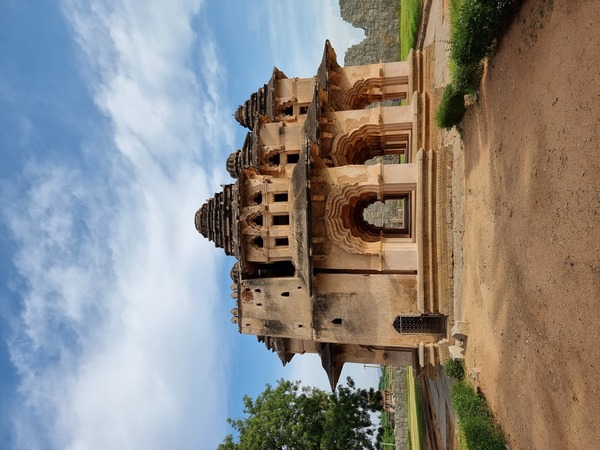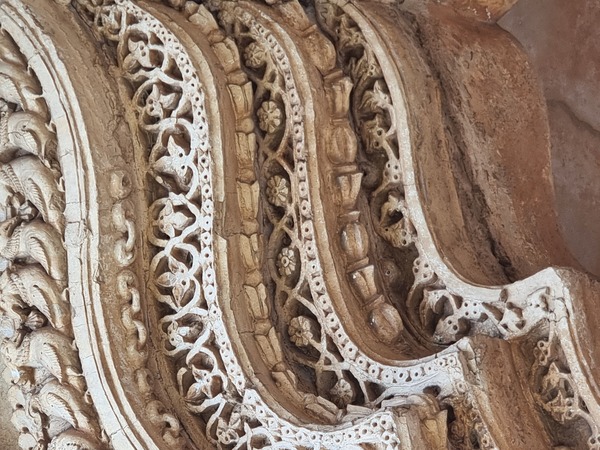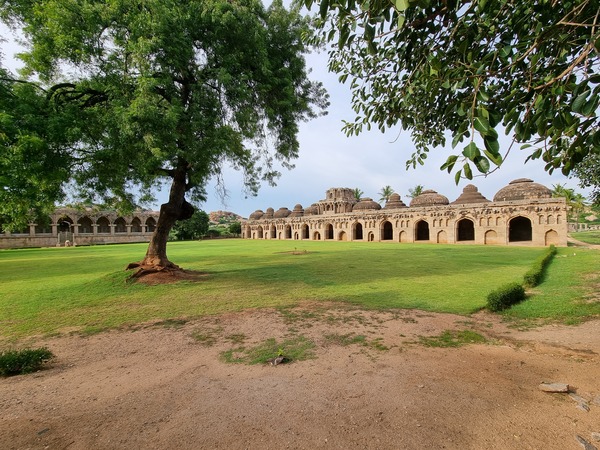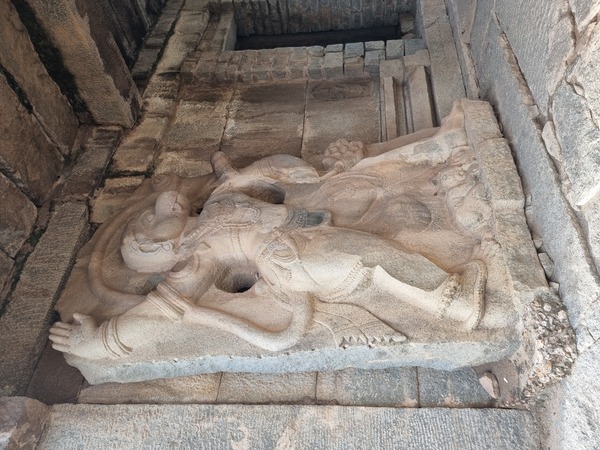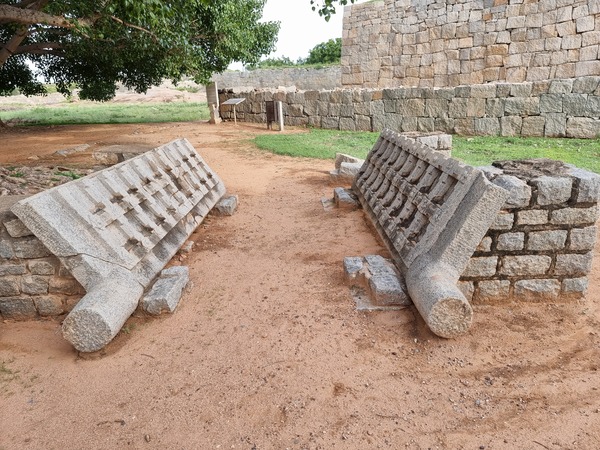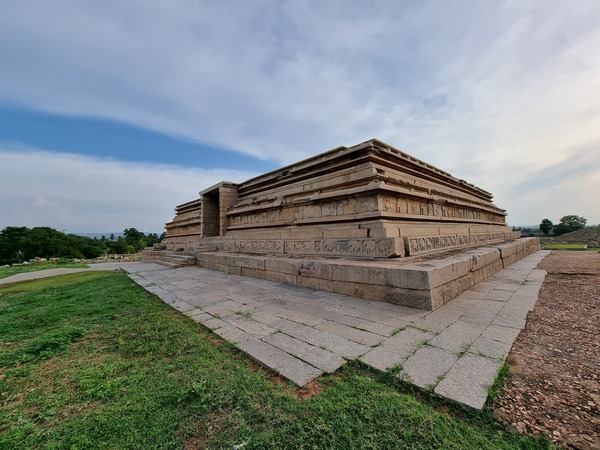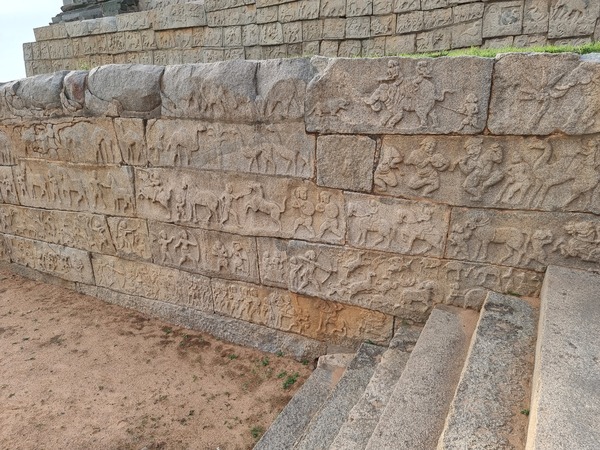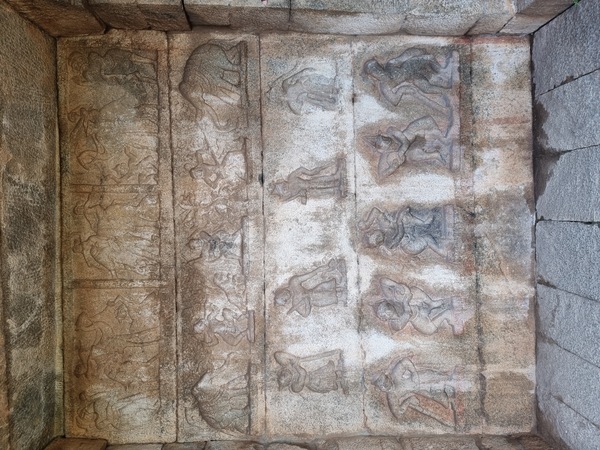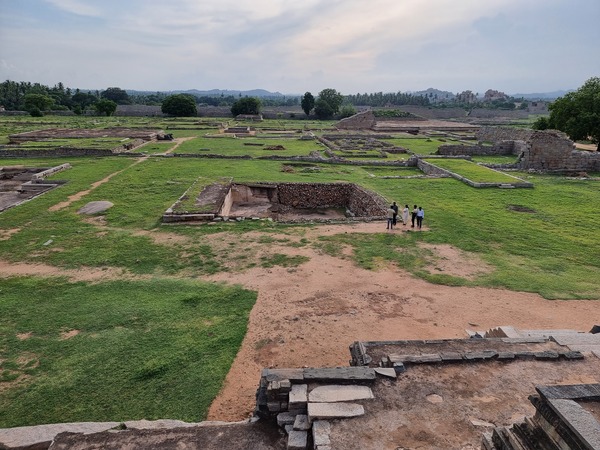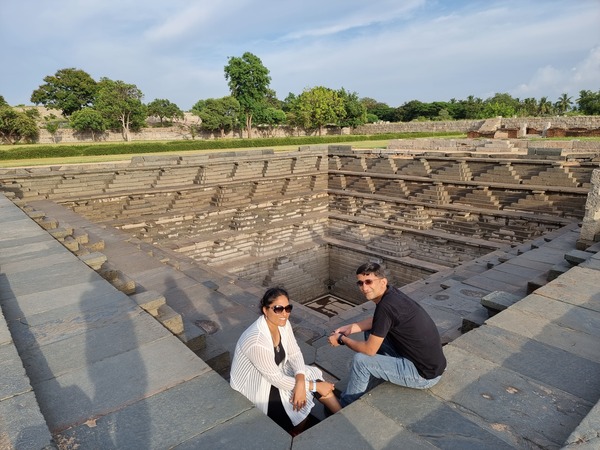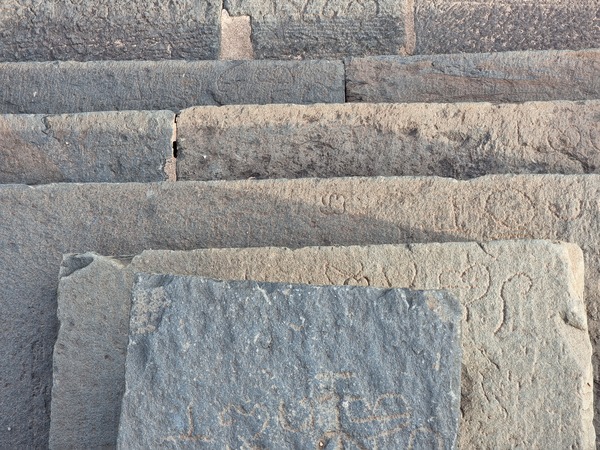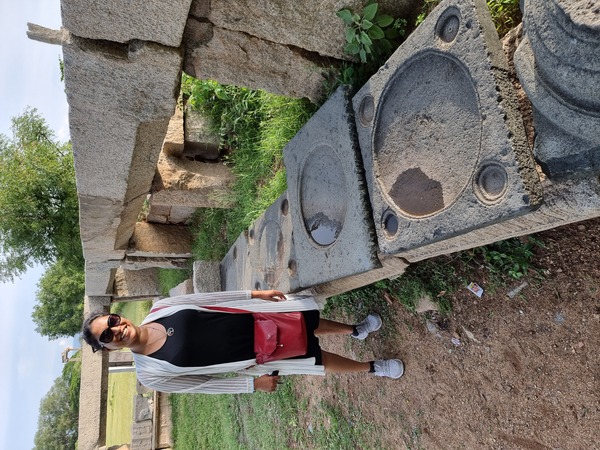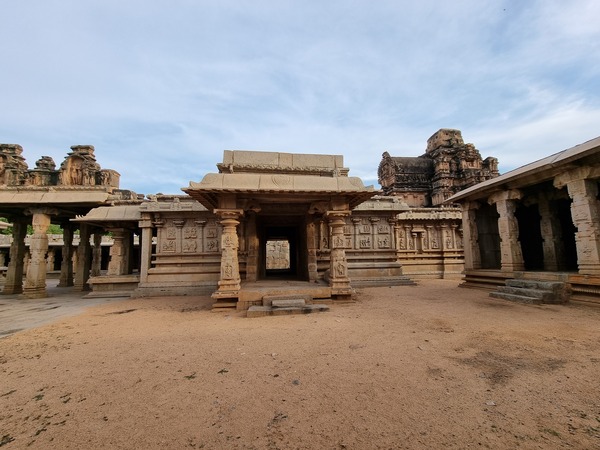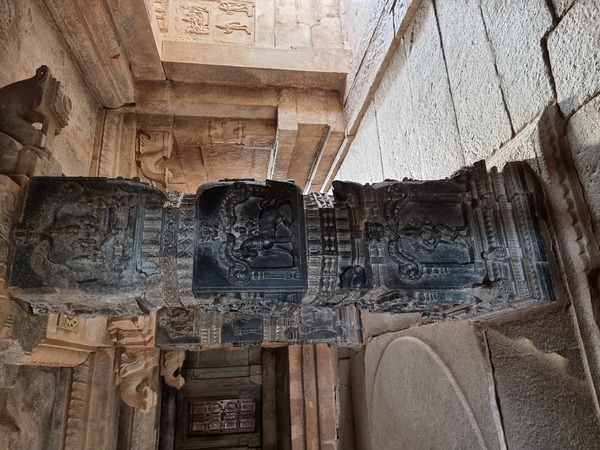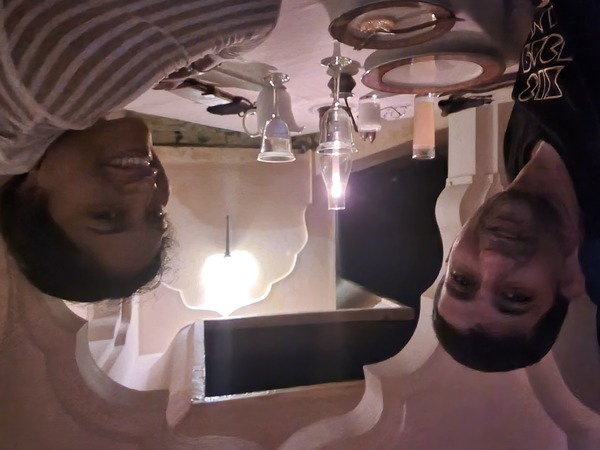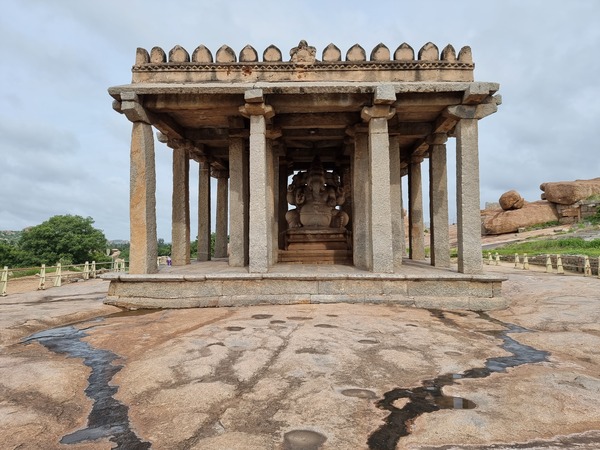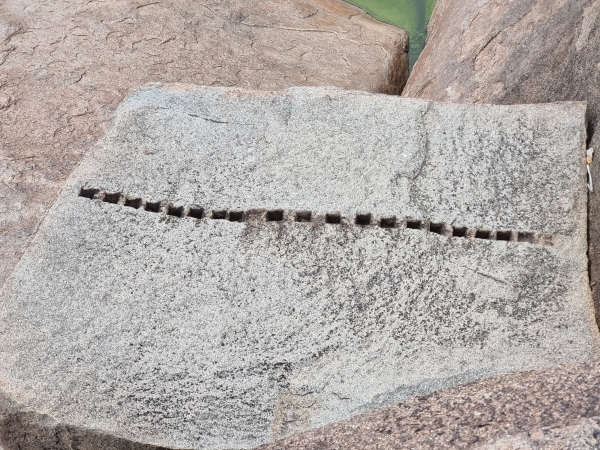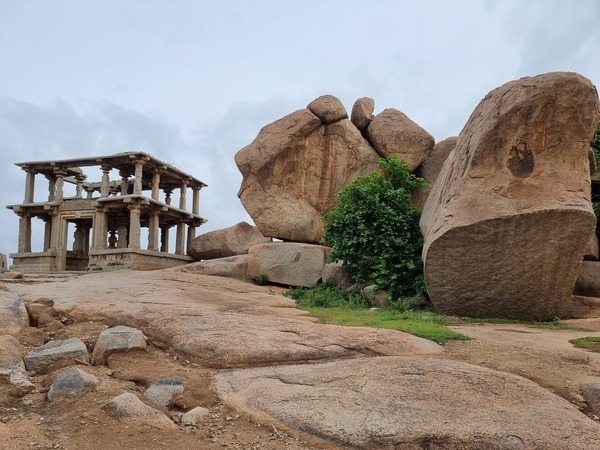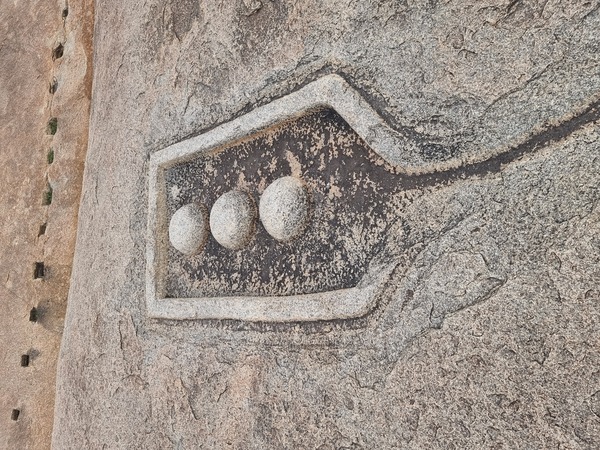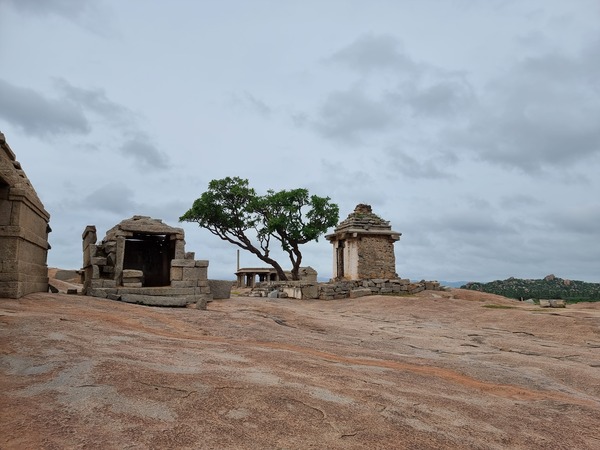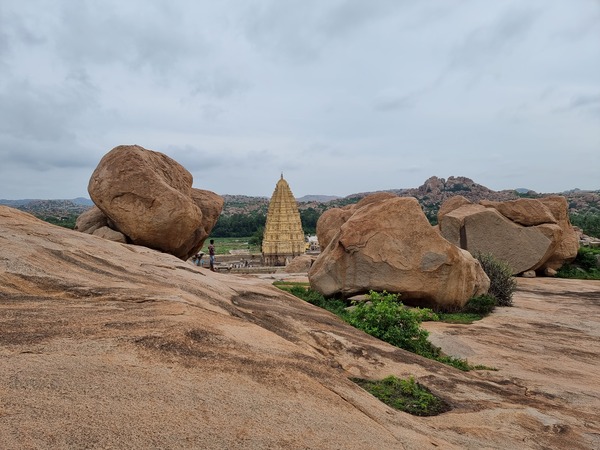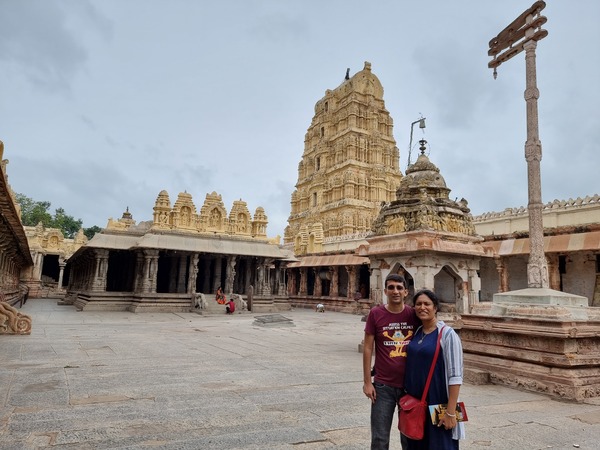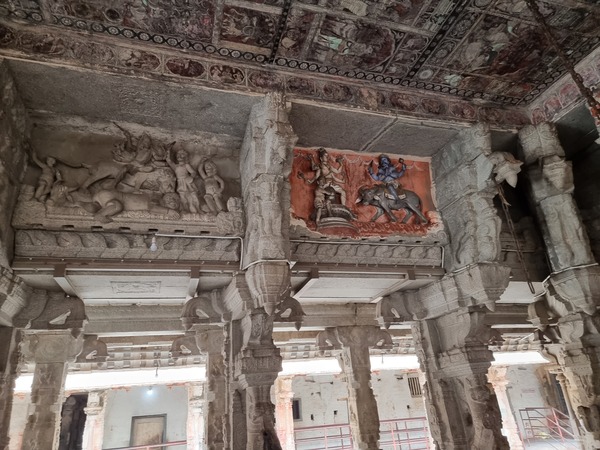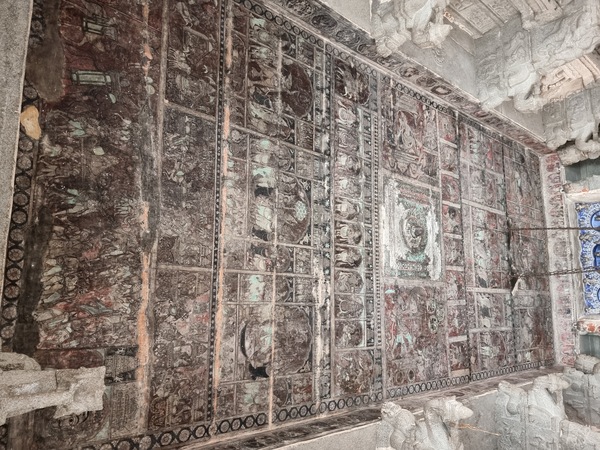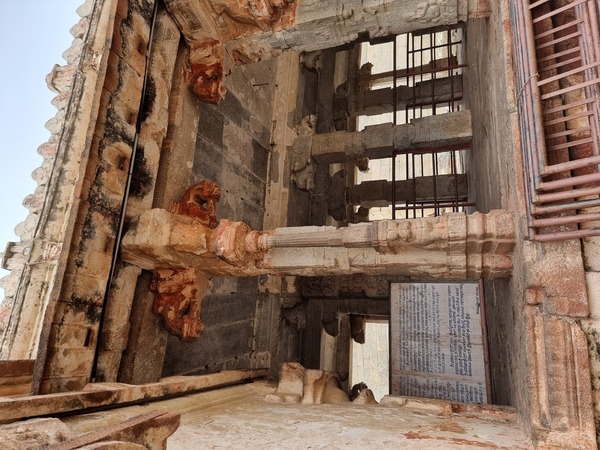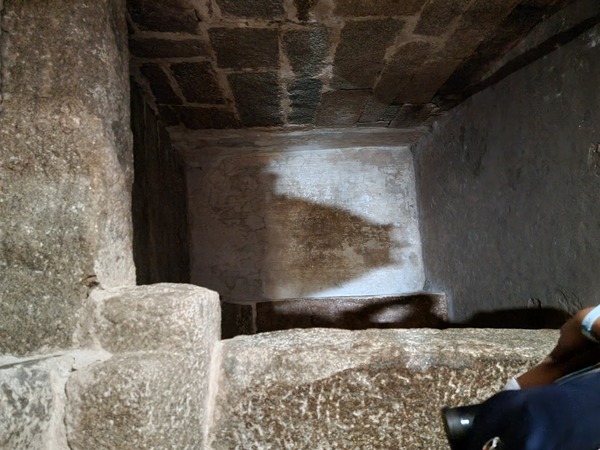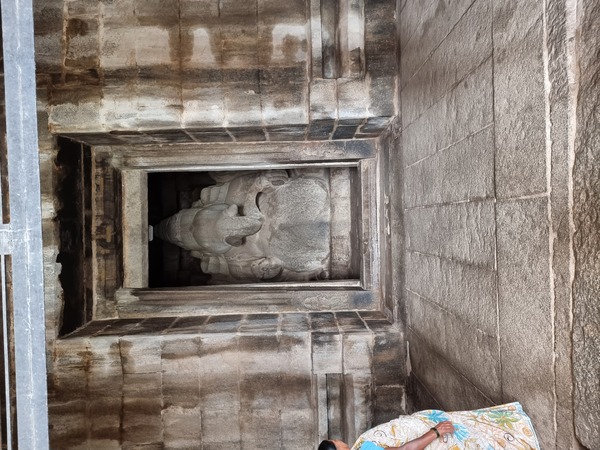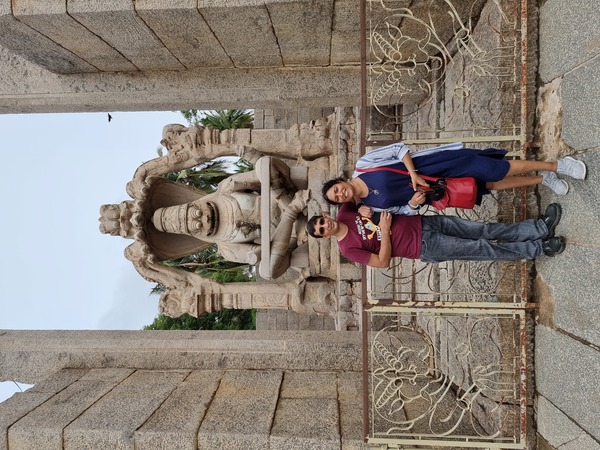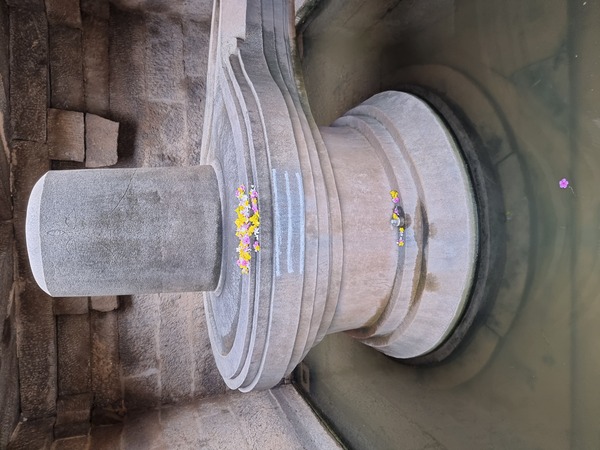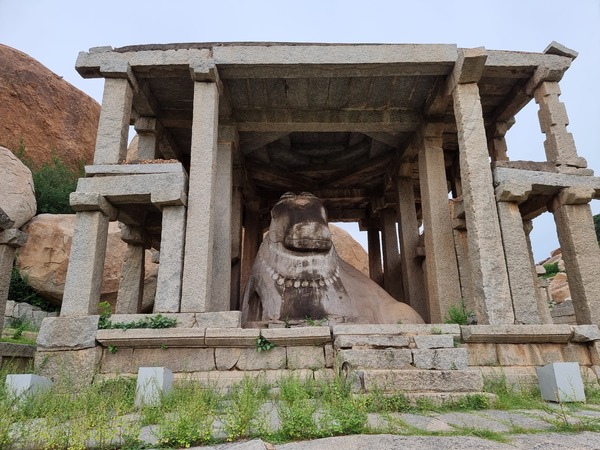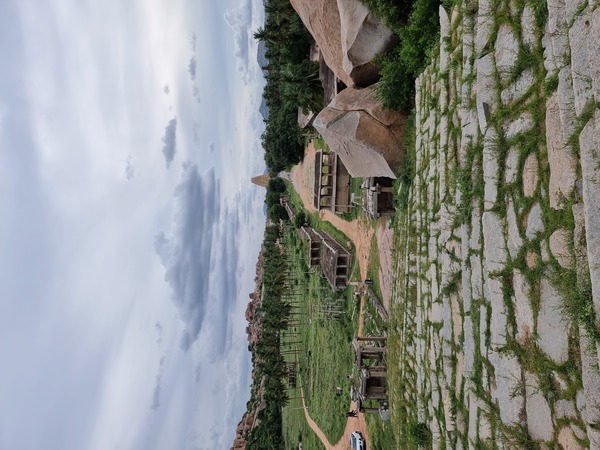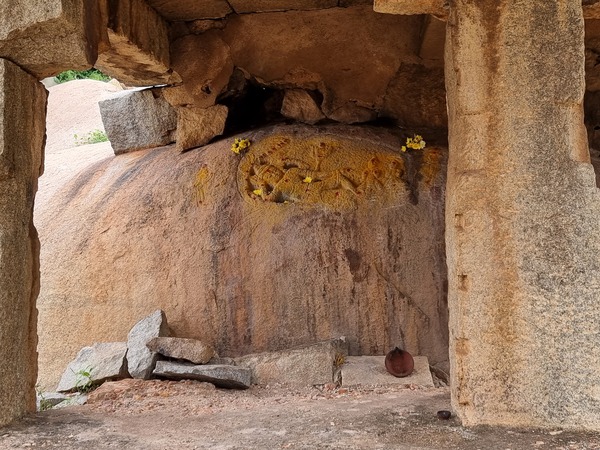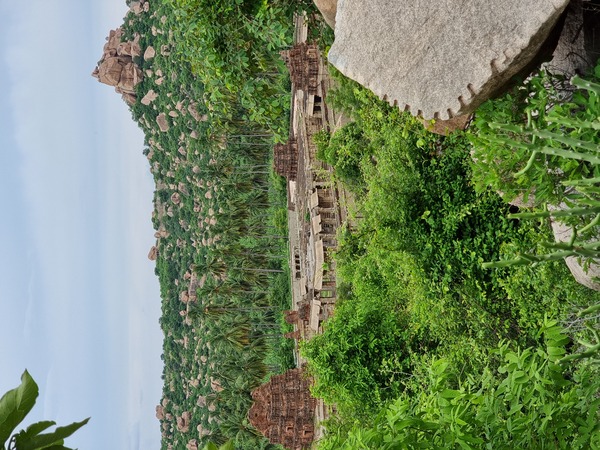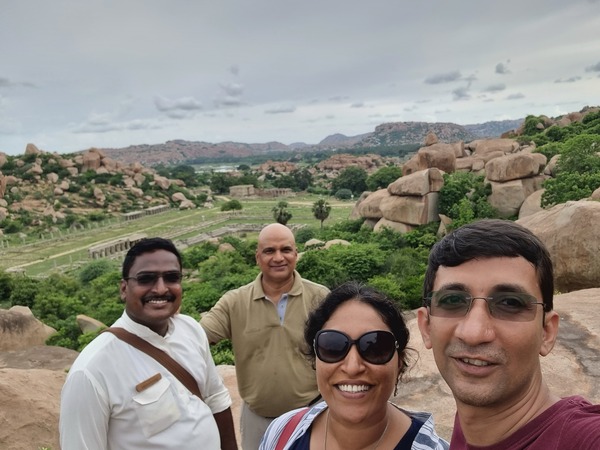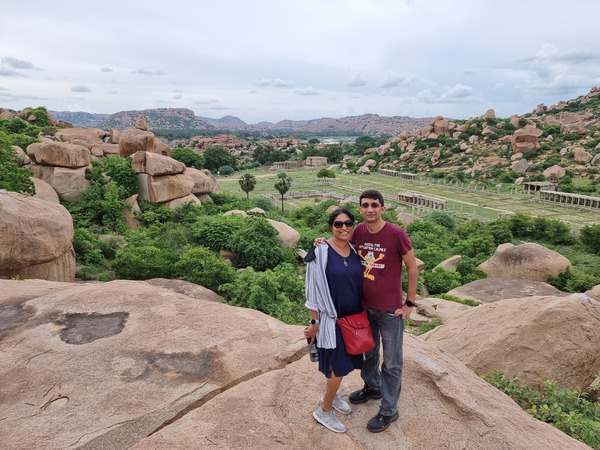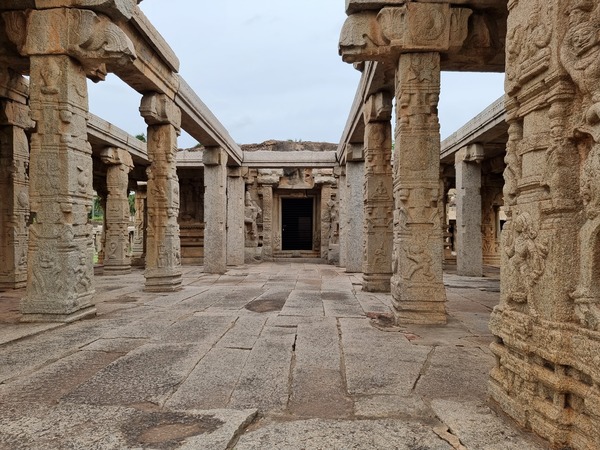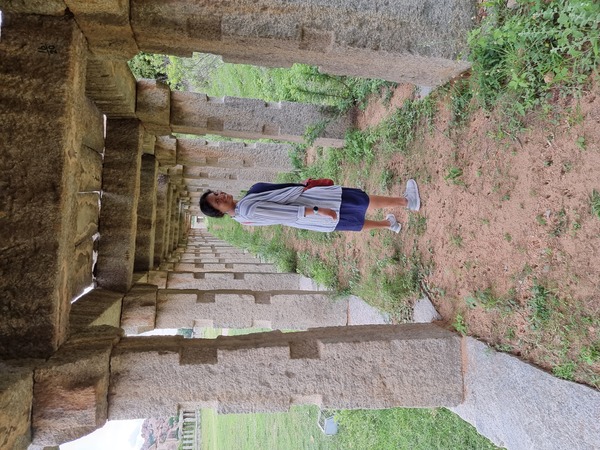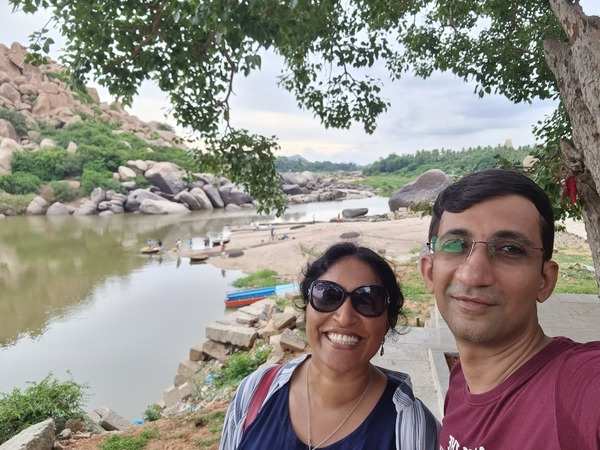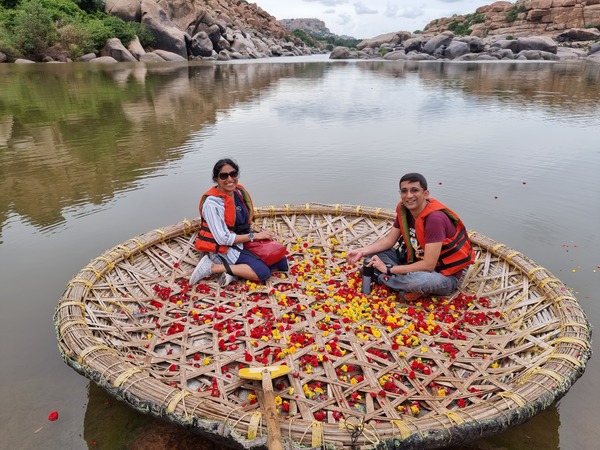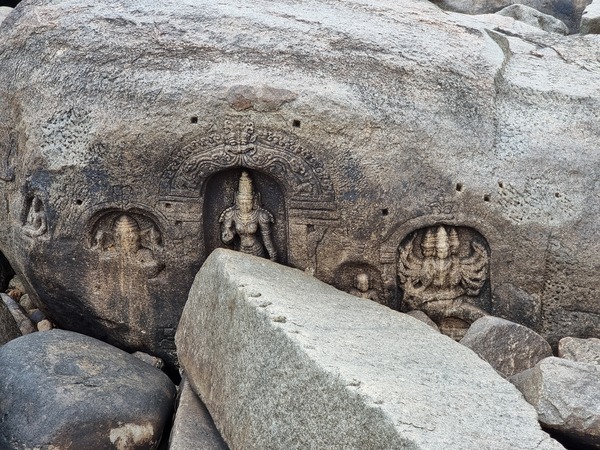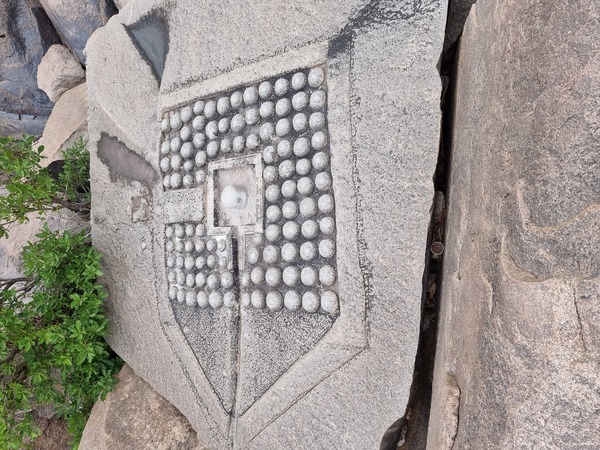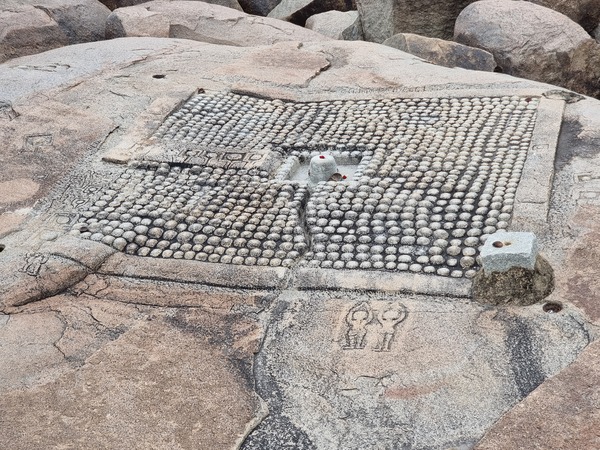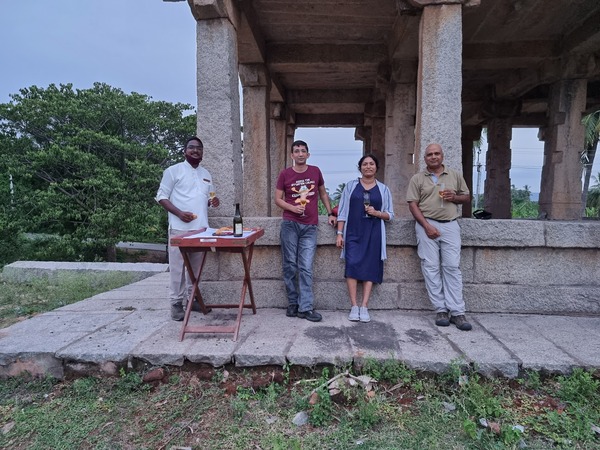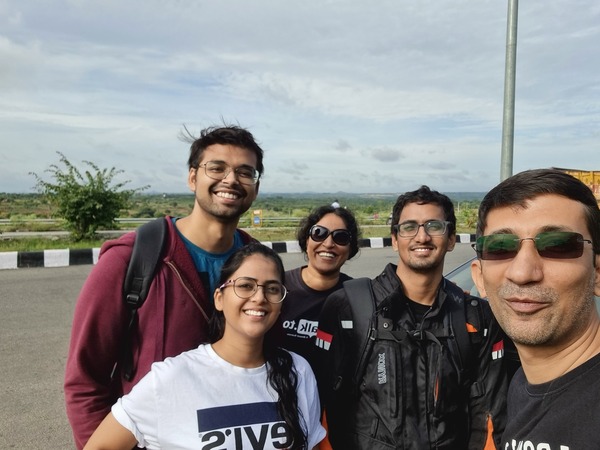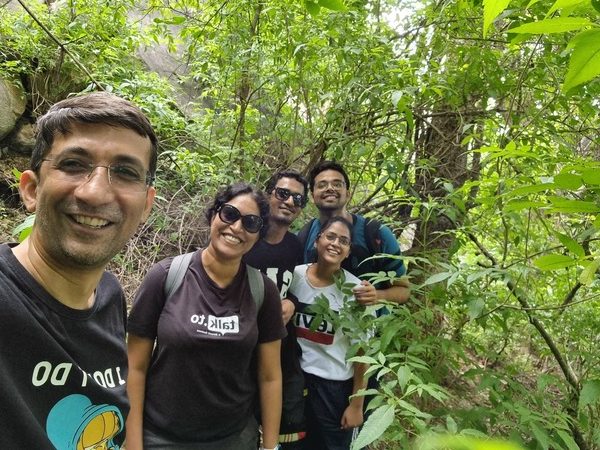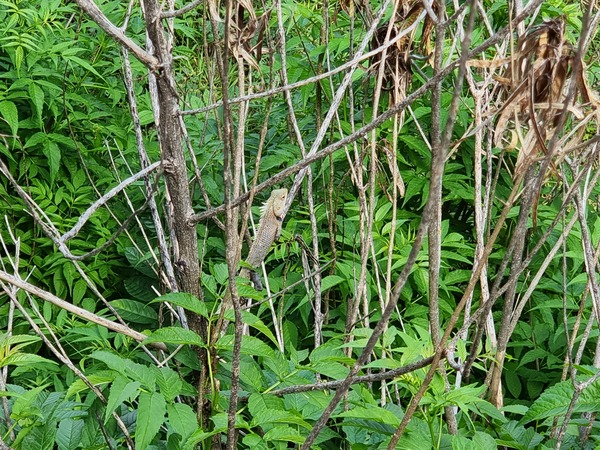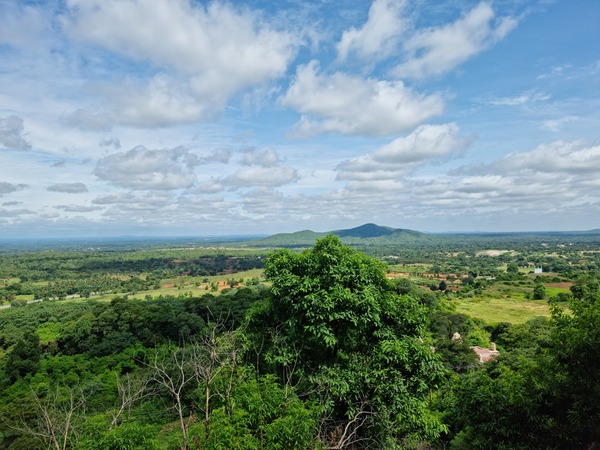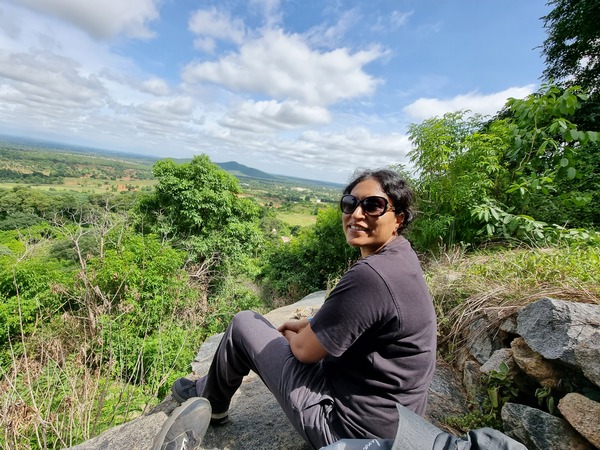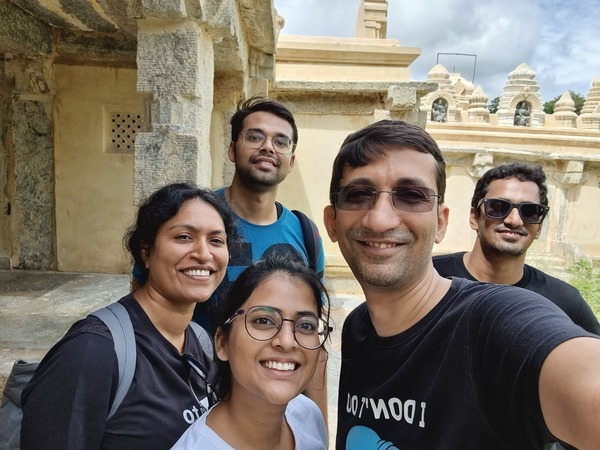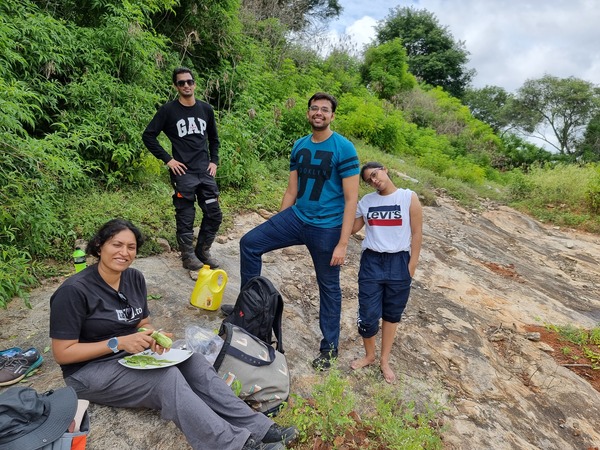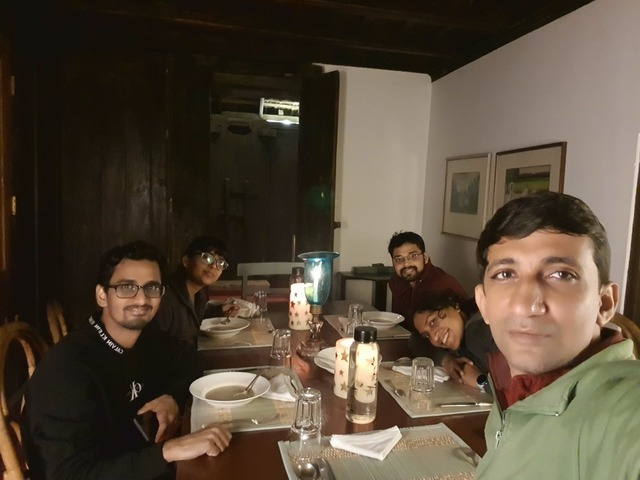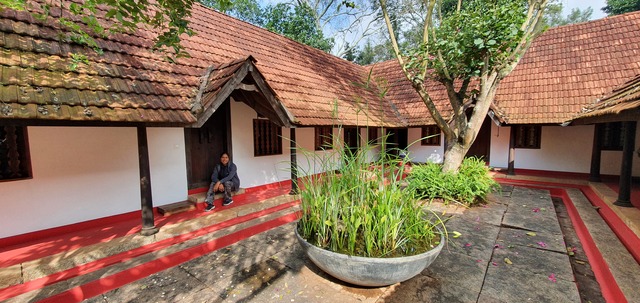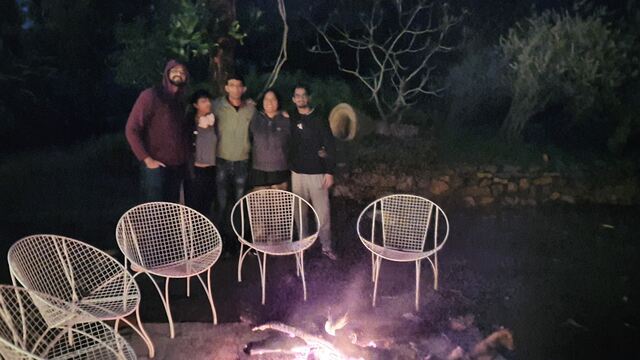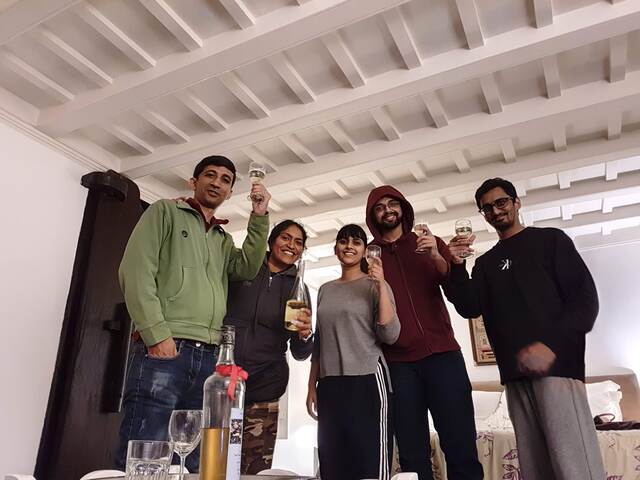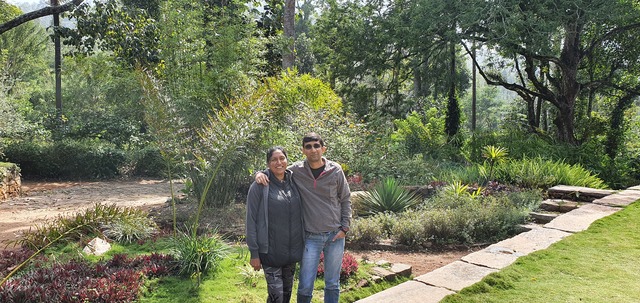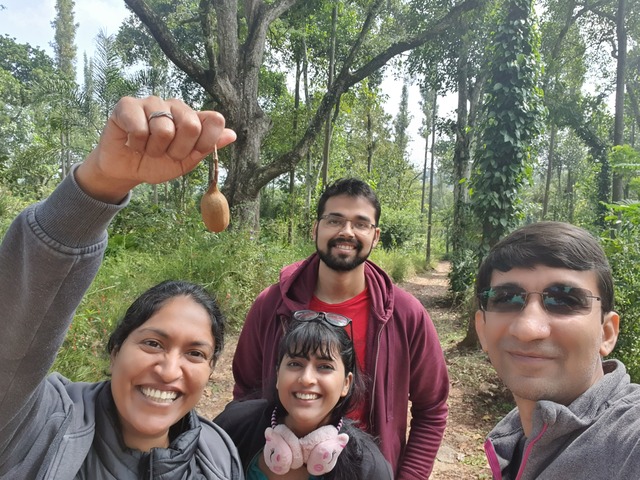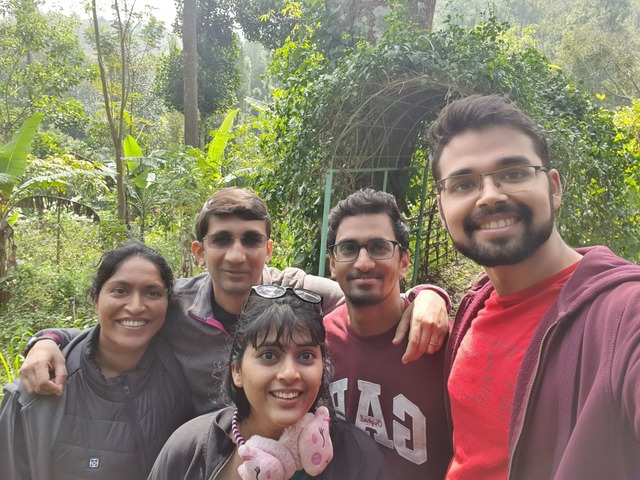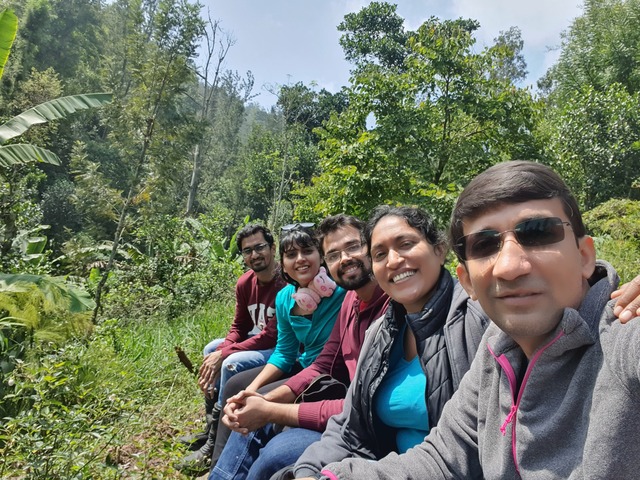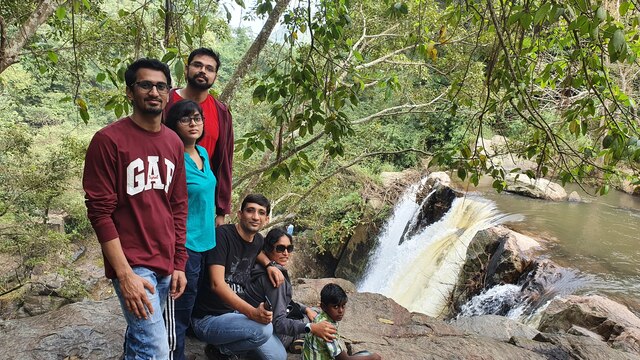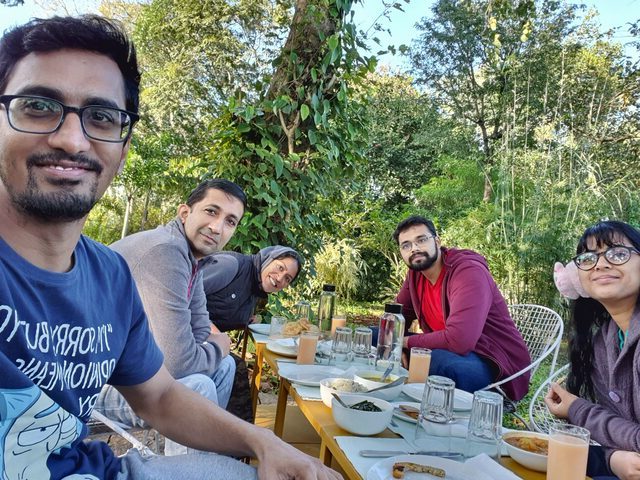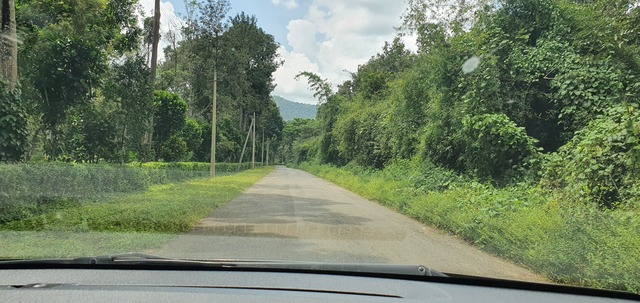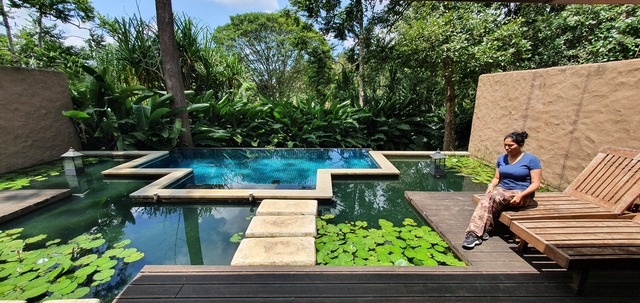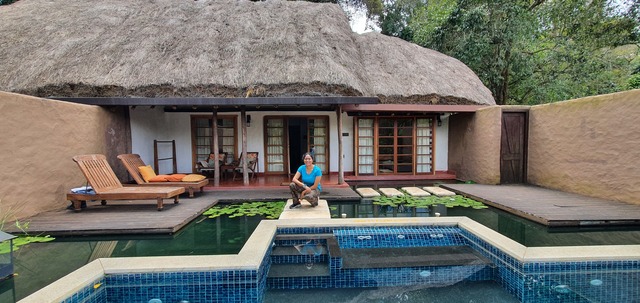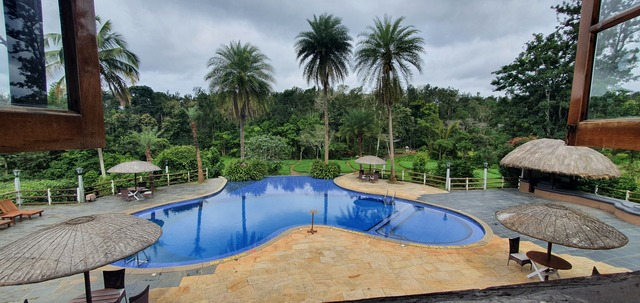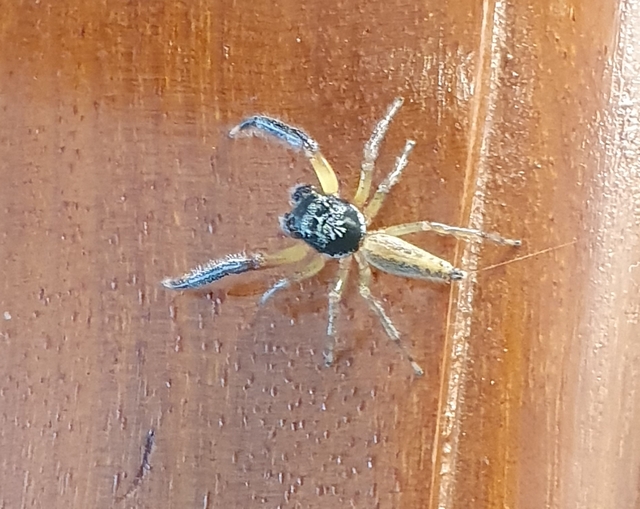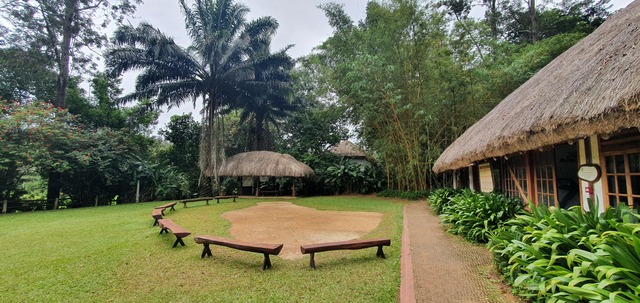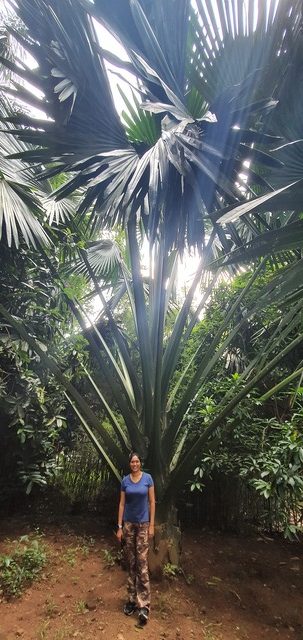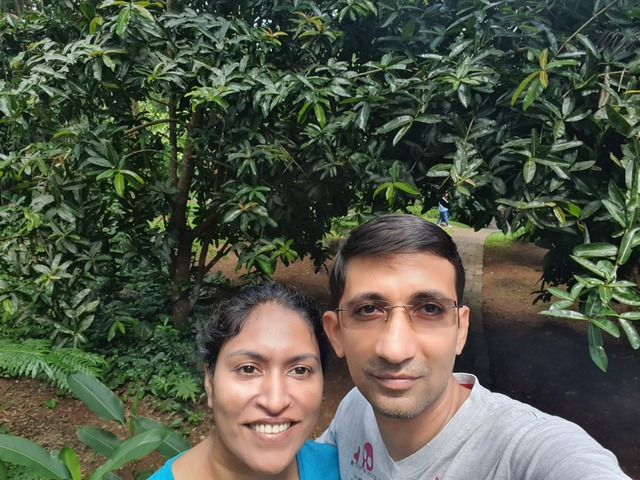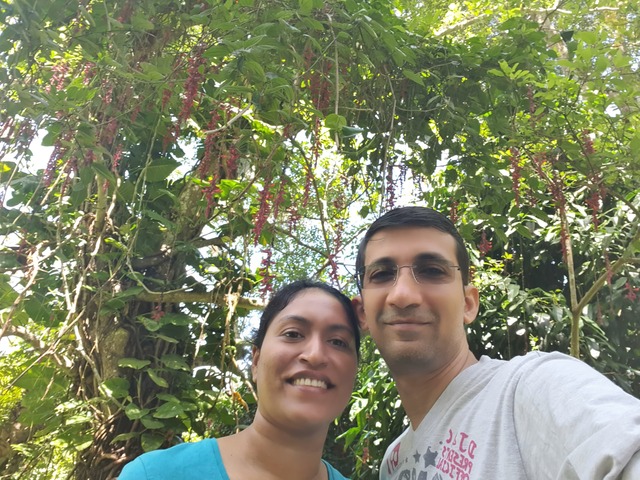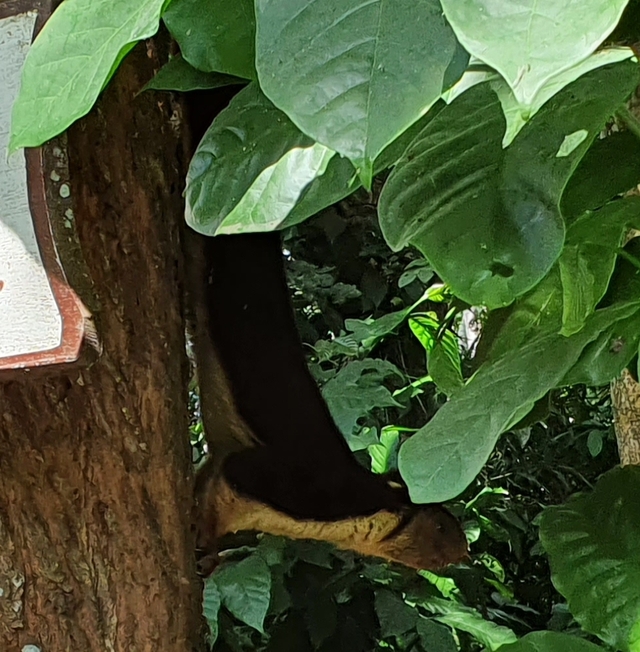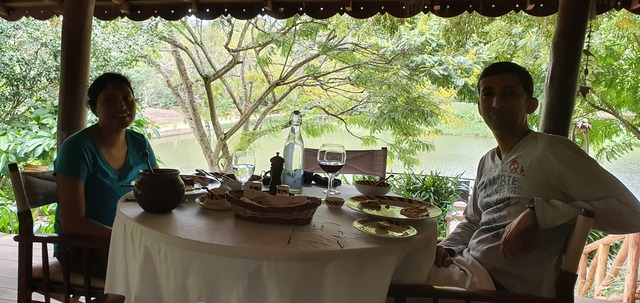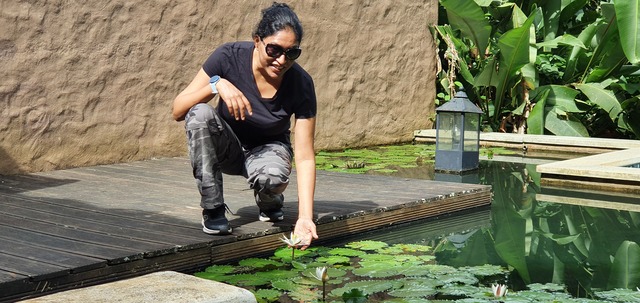Cambodia is a country that I have been wanting to visit for a long time and last month I finally got a chance to visit it thanks to Santosh from Exotic Expeditions. The planning for this trip was a lot more fluid than I like but we finally made it there and back. Initially me and Jani both planned to go for the trip, then as I was about to book Jani had a work trip come up so I decided to book the trip as a solo traveler. Then a little while later Jani’s trip was pushed out so she also booked the trip. This meant that we both had two different PNR’s for the flights. Interestingly, for some reason while I got a single PNR for the entire flight to Cambodia (with a halt in Thailand) she had separate PNR’s for each leg.(more on that later)
The day of the flight we left home and checked into the flight. Met up with Tittli at the airport and the boarding etc was quite smooth. As Jani had two separate PNR’s we booked both our bags under my name only so that she wouldn’t have to re-check them in at Thailand. When we landed at Thailand, we tried getting Jani’s second boarding pass from the Transit desk but were told that she would have to go clear immigration and then check back into the flight at the Airline counter outside. I thought I will go out with her as well but was turned back at the immigration counter and told to go via the Transfer desk to the boarding gate. Jani had to explain multiple times about why she was going out via the immigration before they finally let her through. Once out she was smart enough to figure out that she could print out the boarding pass via the self-service kiosk instead of waiting in the queue at the counter.
Once she cleared security things were simple, and the flight was uneventful. We landed at Phnom Penh and took a cab to the hotel (SIM Boutique Hotel). Unfortunately for us we reached the hotel at 10:30am where as the check-in time was 2pm. The lady at the reception told us that the earlier she could give us a room was between 12-1pm. So we had to wait in the lobby till we got the rooms allocated. We thought that we would grab something to eat but the hotel restaurant was closed and we really didn’t have the energy to walk around so we just hung out in the lobby. I think the lady at the reception got tired of hearing the snores so we got the room around 11:30 and we went up and crashed. After a few hour nap we were a lot more eager to explore the area and by then the remainder of the group had also arrived. (They came from Vietnam via bus as they had combined the two countries). While the others were freshening up me and Jani walked over to this small restaurant called ‘Wheat & Beans’ a few streets over where we grabbed a quick snack.

Ready and eager to start exploring Cambodia
By the time we were finished with our meal the others were done freshening up and ready to explore so we took two tuk-tuk’s to the Night market. The market was decent and I did manage to pick up a T-Shirt and a shotglass amongst other things. Since folks were still tired and hungry we broke early for dinner. Jani and Santosh decided to try the local cuisine and the rest of us ended up having Indian food. This was the first trip where we had a lot more Indian food than the local one because the rest of the group was tired of local food (they didn’t have the best experience in Vietnam food wise). This particular restaurant was pathetic and the quantity was so small that effectively we had like one piece each of Aalu Ghobhi and 2 pieces each from the Paneer. The naan looked like what you would get if you made a pizza without any toppings. To top things off, the refuse to serve any water unless we paid for it and we had a lizard giving us company. Both Fatima and Divya are petrified of lizards so they had an especially fun time.
Once we got back to the hotel the original Idea was to get some sleep but then Divya, Sapna and me decided to go for a swim at the rooftop swimming pool while some of the others went shopping and it was a lot of fun even though we only swam for about half an hour. which was enough time to cool down my body as it is ridiculously hot in Cambodia right now because they’re in the middle of their dry season. The average temperature was in the mid 40’s and since we were walking about all over the place in direct sunlight for most of the trip it felt even worse. Of course Jani enjoyed it but even she was drained out after a whole day in the sun.
The next day started off with breakfast followed by a drive over to the ‘Royal Palace of Cambodia‘, whichwas built back in 1866 and has served as the home for Cambodian monarchs since then. The current king has no official power and is mostly ceremonial. The official name for the palace is “Preah Barom Reacheaveang Chaktomuk Serey Mongkol (Khmer: ព្រះបរមរាជវាំងចតុមុខសិរីមង្គល)“. Unfortunately we were not allowed to take photos of the main hall but the rest of the entire setup was impressive. Apparently only 40% of the area is open to public and out out that we walked through most of the important parts.
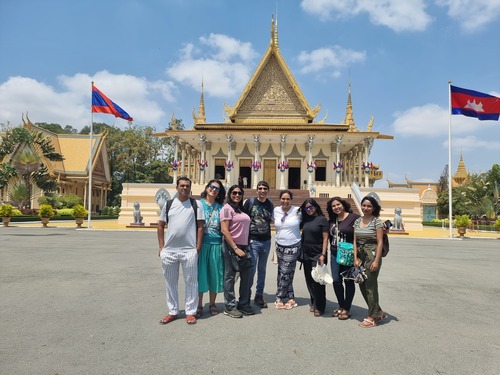
Group photo in front of the Royal Palace of Cambodia
One of the interesting (for me anyway) things was that you are not allowed inside if you are wearing a sleeveless top. At most of the other places that have this rule you were allowed to go in if you wrapped a shawl or a shrug around yourself before entering but here that also wasn’t allowed. You needed to change into a sleeved shirt or but a T-Shirt from the stall conveniently located right next to the ticket booth. Divya ended up having to purchase a T-Shirt because she wore a sleeveless dress and even though the color matched with the dress it looked funny :). Our guide was sweet enough that he told her that she could take off the t-shirt in the end and took a photo of hers in the dress for her.
The palace also has these beautiful wall paintings portraying the story of Ramayana (called Reamker or the Story of Rama in Khmer). The depiction is mostly the same as what we have in India but their ending is completely different, in their version Rama and Sita lived happily ever after once the story concluded. Whereas in the Indian version, Sita returned to earth at the end. The paintings are gorgeous but are done in the Cambodian way making it look very strange to us because the faces especially are painted very differently.
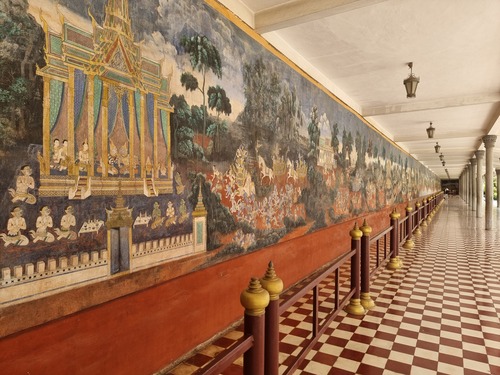
Mural depicting Ramayana (called Reamker or the Story of Rama in Khmer)
The palace also has a small hill in the middle called Mount Kailash with a temple at the top. We couldn’t climb it as it was still under renovation but the structure looked impressive. On the other side of the hill is the Silver Pagoda, the official name for which is “Wat Ubaosoth Ratanaram (Khmer: វត្តឧបោសថរតនារាម), also known as “Wat Preah Keo Morakot” (Khmer: វត្តព្រះកែវមរកត, “Temple of the Emerald-Crystal Buddha”).
The pagoda is named such because the entire floor of the structure is inlaid with 5,329 silver tiles each weighing 1.125 KG. Amongst the treasures displayed in the pagoda we have the “Emerald Buddha” which is a 66 centimeters tall statue supposedly carved from a single emerald. Another notable treasure is the gold Maitreya Buddha statue which is a 90 kg life sized statue covered with 9584 diamonds. I was surprised to see that the French who ruled Cambodia till 1953 didn’t end up stealing all the diamonds from the statue the same way that the British stole from India. The statue even survived the Khmer Rouge which is even more surprising as they were rabidly anti-religion.
We also saw loads of other artifacts and treasures in the complex which were beautiful but too many to list out here. One of the exhibits that stood out was the dress code for the palace. There is a dedicated color for each day of the week and everyone dresses in that color for the day.
After the palace we drove over to the Killing Field which was a horrible experience. Not because of any problems but because I can’t understand the mindset that would drive someone to such atrocities. You can read about the killing fields over on Wikipedia if you want, but be aware that it is a grim read. Basically over 2 million Cambodians were killed in just over 3 years, 8 months. Some in the jails, most in fields like this one where folks were killed in what can only be described as an industrial scale. Walking through the fields listening to the audio tour was sobering. There is a tree in there, where kids were killed by bashing their skulls against it and tossing them like garbage into the pit next to it. Others were hacked to pieces or killed with DDT to cover the smell.
Once we were finished at the Killing field, we went over to the Toul Sleng Genocide Museum, which continued the story of brutality. This site was originally a school which was converted to a Jail where confessions were extracted from prisoners using the most brutal torture. After the prisoners confessed or if the prison was overcrowded they were sent to the Killing field for disposal. Only 12 people survived the prison (7 adults and 5 children). The Wikipedia page on the museum has more details if you are interested. I was in no mood to take any pics over there as it is depressing to go to such sites.
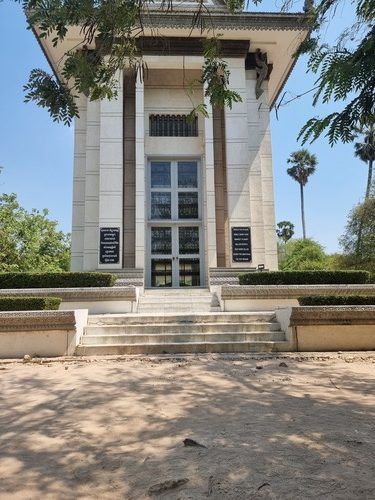
Multi-Storied Monument containing skulls and bones from people massacred at the Killing fields
That being said, I am glad that they have this memorial to the atrocities committed there so that the world knows what they went through. We need to have similar memorials built for the massacres that happened India as well, so that our future generations and the foreign visitors know what our ancestors were put through by the Invaders and colonizers especially the British. I know the Jallianwala Bagh massacre has a small memorial dedicated to it but we should explore something like this for memory as well as memorials to some of the other massacres we had to deal with such as the Bengal Famine, Kala Pani jail at Andaman’s amongst others. The really sad part is that British have still not apologized or been held accountable for any of their actions in India and other countries they subjugated.
Once we were done at the jail, we took a break for lunch as it was much needed. This trip was pretty much the first one where we ate a lot of Indian food during an international trip as most of the folks with us were tired of the local food and the lack of vegetarian options in it, or rather the lack of tasty veg options in it. This restaurant was quite good and the food was great.
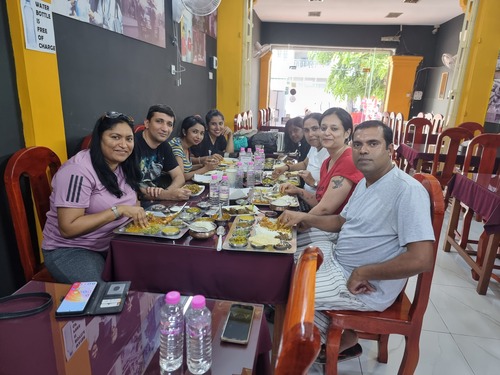
Group pic at Lunch
After lunch we braved the heat again to go to ‘Wat Phnom Historical Site’ which had a lovely temple with some great views and peaceful atmosphere which was much needed after the earlier sites. We walked about the location and once we were all relaxed headed back to the hotel and pretty much everyone just crashed because the day had been pretty exhausting with the heat and the content.
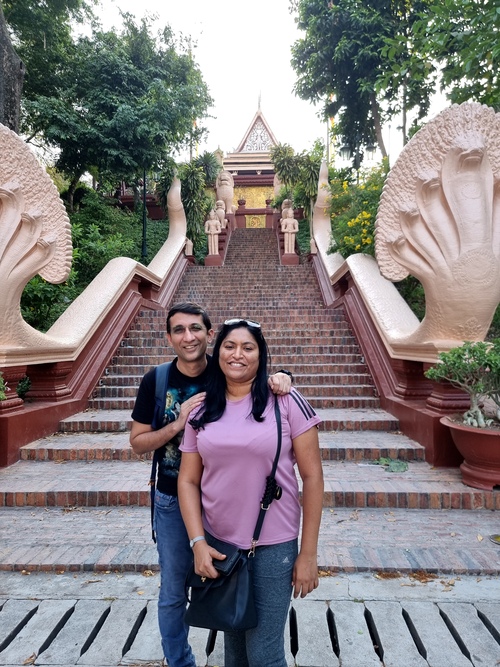
Wat Phnom Historical Site temple
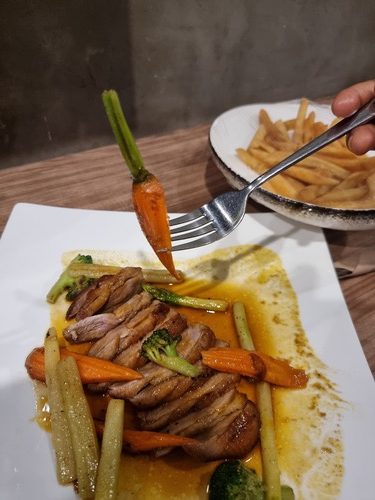
Full Carrot in the Sauted vegetables we got
Jani and I decided to order room service late at night as we got hungry where she was served a sauteed carrot (amongst other things) complete with the leaves. She liked it is all I am going to say about that but I am happy I didn’t order it 🙂
Day 3 started with a drive over to Siam Reap which was supposed to take us about 6 hours but took almost 7 1/2-8 hours thanks to stops. We ate some weird fruits on the way along with Mango’s and Ice Apple. They also had fried Spiders and Crickets available as snacks but no one in the group took them up on the offer for some reason ;). We got to Siam Reap in the late afternoon and again had Indian food for lunch, after which we reached our hotel (Central Privilege Hotel) and checked in.
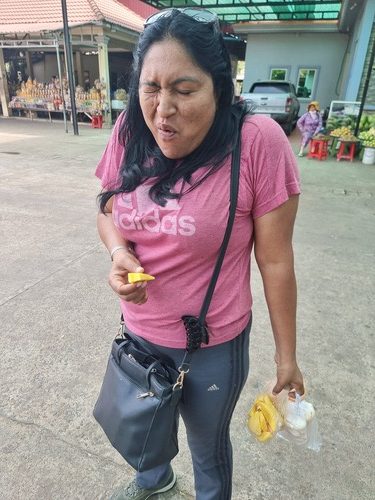
The mangoes were a ‘little’ sour
This was an interesting hotel in many ways. Firstly there is no elevator so you have to use the stairs to carry the luggage to your room. We were on the 4th floor and even though they offered to have the luggage carried over to the room we decided to just do it ourselves as we already had the backpacks on. The AC was quite slow to cool the room and we ended up leaving it on the entire time so that when we entered the room after roaming about it was cool enough. The other problem was the shower which barely gave a stream of water enough to take a bath in. All that being said the hospitality of the hotel was phenomenal and they went out of their way to support us during the stay which more than made up for any lack of amenities or issues.
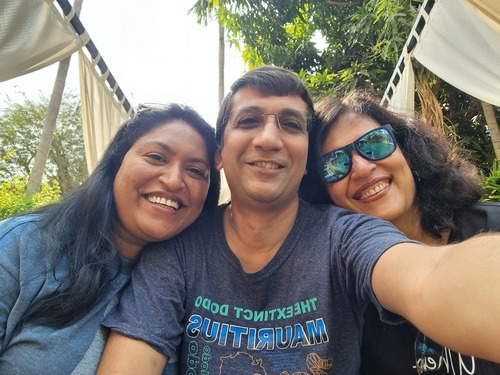
Hanging out at the pool
After freshening up we all walked over to the old market which was nearby and did a little bit of shopping. It was so hot even at 5pm that I felt like I was melting in the heat. Bought multiple cans of Soft drinks from a shop nearby and they were very amused by my exhausted/drained out look when I was ordering. An interesting fact I noticed was that there were so many folks selling paintings that I kept getting tempted to buy one as they all looked phenomenal. Unfortunately as I don’t have space at home to put up more paintings I had to restrain myself. 🙁 We did pick up a few T-Shirts and other things from the market but I felt that the market at Phnom Penh had more varieties/selection of t-shirt designs available. Right next to the market is the famous Pub street which was buzzing with lights, music and lots of people. It reminded me of Walking street in Thailand (without the sex shows).
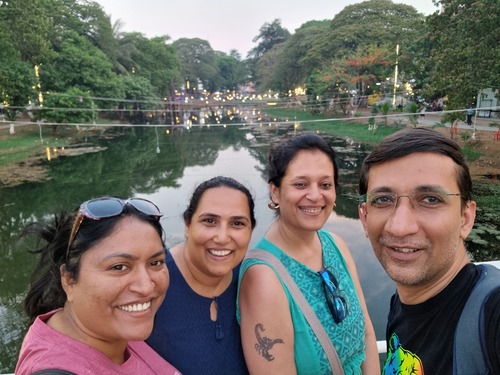
Walking over to the Pub-Street & Local markets
We tried out a bunch of street food over there and I especially liked the Ice Cream rolls that were freshly made for us. The folks here are very friendly and it was fun hanging out over there. We ended up skipping dinner because we had a late lunch and had been munching on stuff frequently. We did get a massage from a street shop which was actually quite good and cheap. We wanted to get a full and proper massage the next day but ended up not doing that. On the way back to the hotel we crossed a road side stall which had insects and other ‘weird’ things available for munching. Even though most people don’t end up buying the stuff I guess enough like taking photos that one of the stalls decided to capitalize on it by charging 50 cents for a photo. The hotel had an outside pool which was quite tempting but none of us had any spare energy so we just crashed.
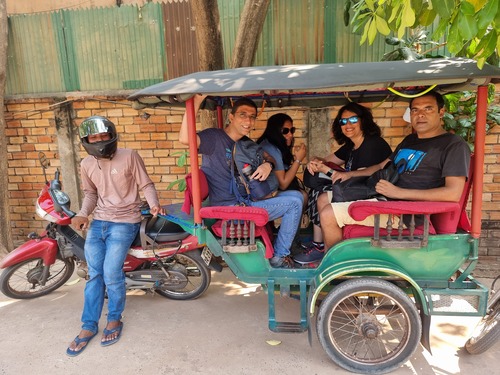
Taking a Tuk-Tuk’s to Angkor Wat
The next day we visited Angkor Wat, the worlds largest religious monument at about 9 square kilometers. We took Tuk-Tuk’s to the temple along with a guide and it was a good thing that we did that because he was able to give us so much information about the temple which we would not have known if we had just been roaming around. You have to purchase a ticket for visiting the temples, we got a day pass each for $37. You need to ensure that you don’t loose the ticket as you have to show it at every location. The counter is quite a way away from the temple entrance itself so unless you know the place it is possible that folks would end up going to the temple and then being sent back to get tickets. Just as we got to the entrance of the main Temple, Divya face planted on the floor and twisted her ankle and scraped her knee. Since she wasn’t hurt too badly, I was making fun of her that she ensured that she did a Sakshat Pranam (Step 5/6 in the linked article) before going into the temple.
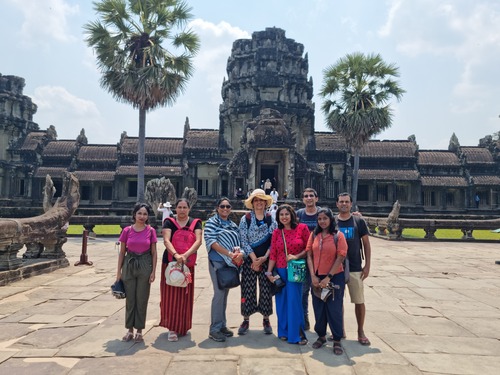
Group Pic in front of Angkor Wat
It is hard to describe the scale of the temple if you have not seen it yourself. Each block weighs a few tons and the carvings/paintings in the temple are amazing. You can read about the temple and the complex over on their Wikipedia page. There is a lot of restoration work going on at the site and one of the interesting points is that they are restoring using the original material as much as possible. This means that for each block to be restored, they first search the site for the block and then use it. If they don’t find it then they carve a replacement using the same stone but with only about 30-40% of the carvings. This is so that future generations know that that particular block was replaced and is not the original.
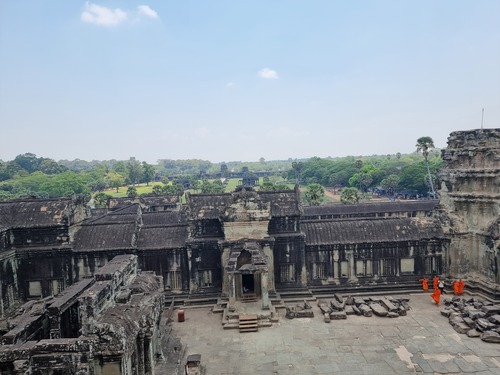
View of the temple complex from the top
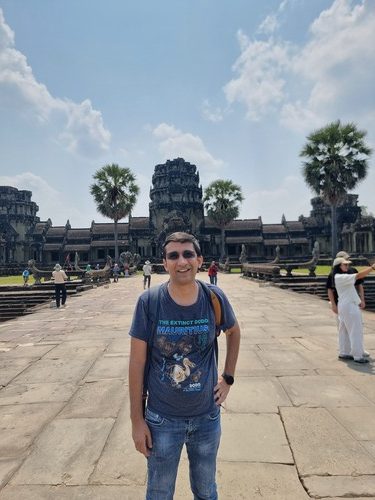
Me, just about melting from the heat
Since we started our tour at 9:30am which is something our guide told us that we shouldn’t do because of the heat (but he told us that after we started the tour 🙂 ) and sun. By the time we finished walking around the main temple, we were drained and just about ready to have the Tuk-tuk come inside to pick us up… unfortunately that wasn’t possible so we had to walk :(. The Tuk-tuk’s carried cold water for us with was really sweet of them and really required as we all were getting dehydrated in the heat.
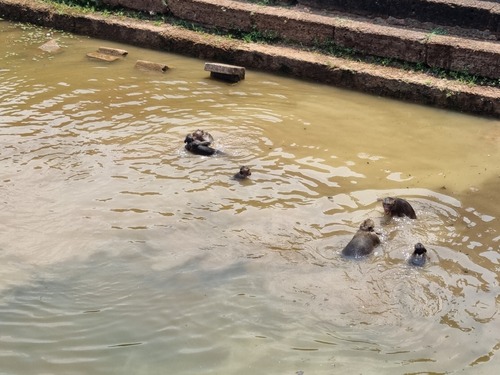
Monkeys in the water trying to escape the heat
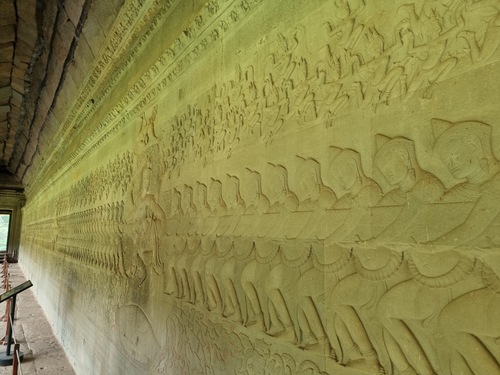
Carvings at the temple
After the refreshing drink of ice-cold water, we broke for Lunch at one of the local restaurants recommended by our guide. We ordered a varied bunch of stuff at the place and pretty much everything we got tasted awesome. Jani ordered coconut water and they came back with a coconut that was more than double the size of coconuts we usually get. (See below).
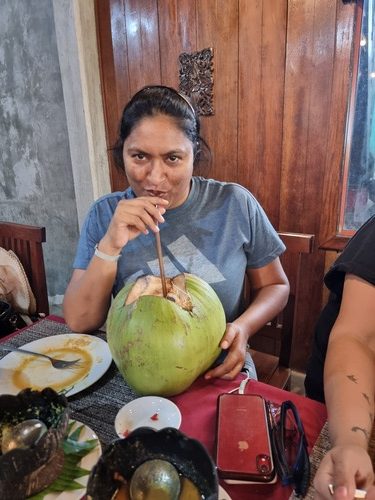
Jani with her gigantic coconut
The place was air conditioned so it was hard for us to head back out into the heat but we had to so we drove over to the second stop of the day “Ta-Prohm” temple about a kilometer away from the main temple. It is also known as the Tomb Raider Temple, because the move was shot here. This temple was built in 1186 AD by Jayavarman VII in honor of his family. It was abandoned in the 15th century when the Khmer empire collapsed and was lost in the Jungle. During this time nature tried reclaiming the complex and since the temples were created without the use of mortar, trees took root between the stones.
As you enter one of the first structures you see is a temple with a tree growing on top of it. The roots of the tree have grown around the structure and it is pretty much impossible to remove the tree without the structure collapsing as the roots are key supports for the remainder of the temple.
Another really cool structure was a small room with a base pedestal in the middle where if you stand on the ledge around the edge of the room and thump your chest it creates an cool echo. But only if you hit your chest. (or the chest of the person next to you if you want to be mean). Striking any other body part or clapping etc doesn’t echo. I honestly have no idea how they managed to do that but it shows the skill of the people who built the temple. To make it clear, it was all human effort and ingenuity with no aliens involved or needed.
The western word has this notion that they were the only people who could create things and any of the work done by indigenous people in other parts of the world couldn’t possibly be done by them because that would mean that the locals had an advanced civilization that was destroyed (for the most part) by the invaders. So they have come up with this elaborate tale that other than the ancient structures in the western world (Europe mostly) the rest were created by Aliens. (Watch Ancient Aliens if you want to learn more about the torturous logic they use to explain some of the findings).
We walked around the complex awed by the size of the trees that are growing on and around the structures. Obviously took a lot of pics even though we were sweating like anything almost ready to collapse due to the heat. Even Jani found it to be too hot which is something I thought I would never hear.
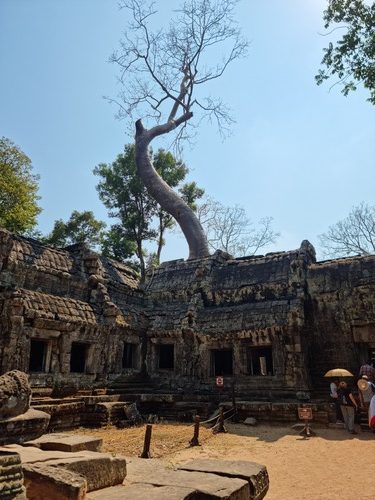
The “Ta-Prohm” temple
The final stop of the day was Bayon temple which has over 200 smiling faces of Buddha carved into the rock. As per Wikipedia “The name of Bayon was given by Etienne Aymonier in 1880. According to his report, Bayon was the Latin transliteration of what he had seen written in Khmer as “Bayânt” which he presumed most have been a corrupted form of the Pali Vejayant or Sanskrit Vaijayant, the name of the celestial palace of Indra of which the Bayon was presumed to be the earthly reflection.”
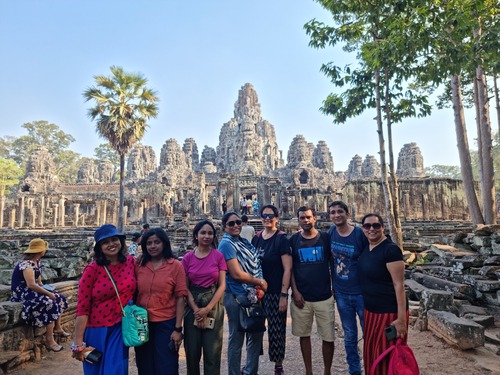
Group pic in front of the Bayon temple
The carvings on the walls in the temple are very detailed and show scenes from the everyday life along with significant historical events. They show the varied culture and people known to the Khmer empire and how well traveled the Khmer people were.
We spent a good amount of time walking around the complex and then were ready to head back to the hotel. Initially we thought we would relax in the pool but it was too hot for that so we all retired to our rooms to cool down a bit before heading out again.
At night, Jani, Divya, Sapna and me again walked over to the Pub street as they wanted to pick up some T-shirts and we wanted to check out the restaurants over there. We ended up having dinner at an Italian place where we ordered Pizza, soup and a Salad. The quantity of the soup given was enough that all 4 of us could have a bowl each but I am not a soup fan so I enjoyed my pizza with a drink. We spent quite a bit of time just hanging out there and could have stayed longer but folks were tired so we headed back to the hotel.
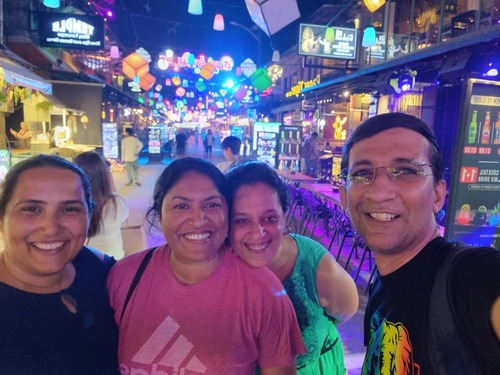
Exploring the Pub Street
For the next day there was an interesting reversal, in that we had the first half of the day free with the tour starting in the second half instead of the other way round. So we had a relaxed breakfast and hung out a bit. Lunch was ordered in via Grab and we all basically relaxed for the first half. Some of the folks did go to the market, even we went over to the Adidas showroom but were back within 20 mins as we didn’t get what we were looking for and it was too hot to walk around the area.
Post lunch we took a van over to the Tonle Sap lake, which is a UNESCO listed biosphere reserve as well as the largest freshwater lake in Southeast Asia. Since it was the dry season, the lake was a lot smaller and shallower with the max depth of only 3 meters instead of the usual 8 meters plus during the rainy season. This meant that we couldn’t take a boat directly to the lake from the parking but instead got to walk through the floating village and interact with the villagers which was a lot more fun.
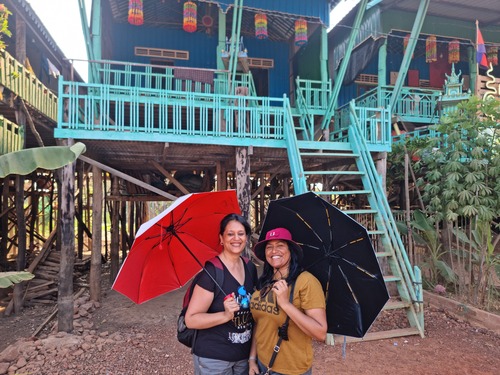
Stilt houses at the ‘Floating Village’
We tried some local food as well as they had veg options as well. The first item was deep fried potato with some local spices which I loved because potato is pretty much my favorite vegetable. The second item was like a dosa but eaten with literally a lot of leaves of different kinds. It was decent, but a bit bland for my taste.
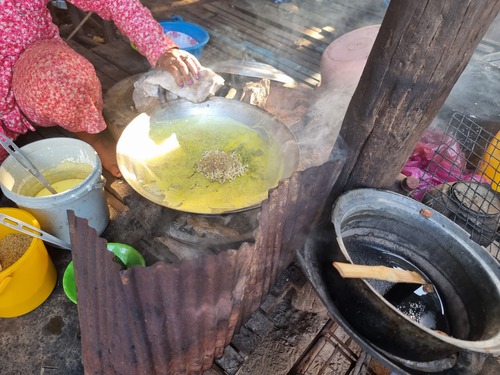
Local dish that looks like a Dosa
All the houses on this road that we were taking to the lake are built on stilts raising them over 8 get in height. What was really surprising was the fact that even though the road we were walking on is underwater every 6 months for 6 months it was still free of army pot holes and well maintained.
After the walk through the village we got to the jetty and took a boat over to the lake the boat we got had issues with the steering where we got stuck a few times in shallow water and had to be pushed clear using poles. In spite of that we made it to the floating restaurant in good time where we chill out for a little bit waiting for the sunset. Took some lovely photos there.
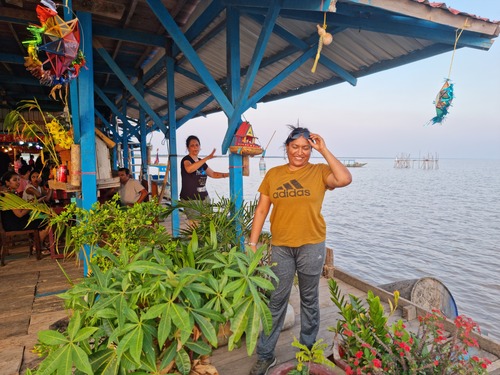
Posing for pics at the floating restaurant
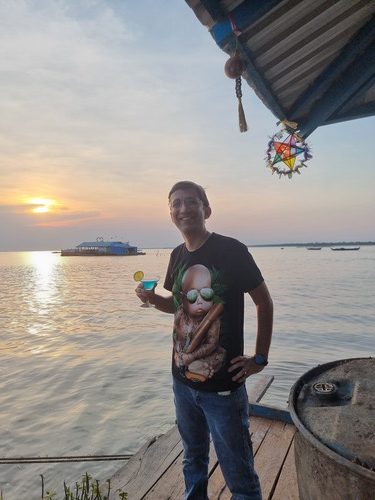
Posing with my drink at the floating restaurant
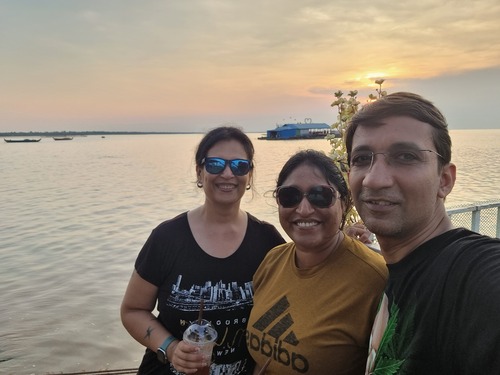
Divya, Jani and Me at Sunset
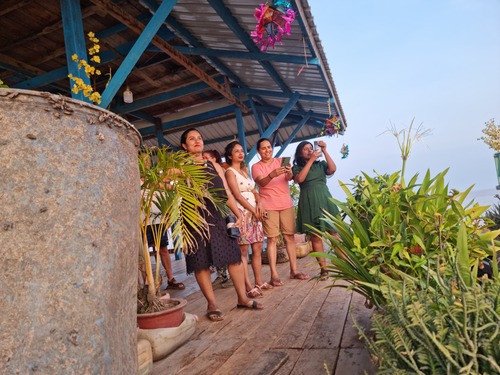
Everyone was too busy taking pics of the sunset to pose
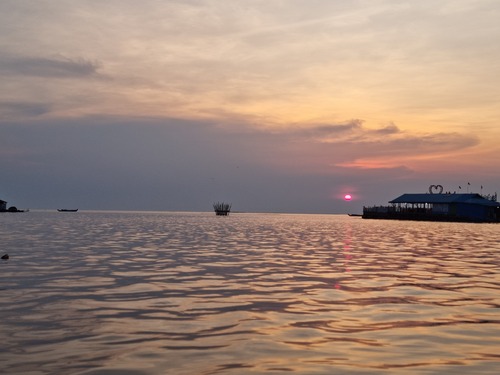
Sunset at Tonle Sap lake
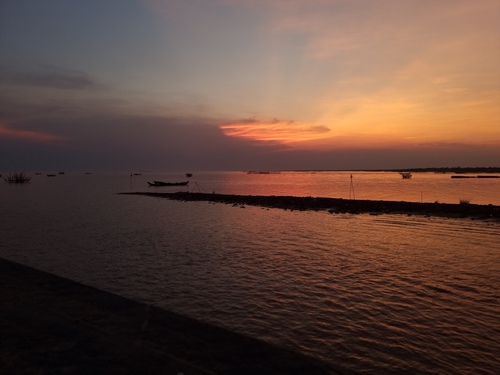
Sunset at Tonle Sap lake
Once the sun set we took the same boat back, and fully justifying our apprehension the boat did in fact breakdown halfway back to the jetty and we got to enjoy sitting in the dark waiting for the replacement boat. Santosh, me and Jani was sitting on the top of the boat so we had a good breeze and surprisingly I didn’t get bitten by many mosquitoes. I did take the chance to experiment with my phone camera settings trying to take some interesting pics. It was too early for the moon to have risen so it got dark pretty soon and I got some cool pics. Found out later that a bat mistook Divya’s hair as its nest, snuggled in and she had to chase it away. That would have been a fantastic pic… After about 20-30 minutes of waiting, while the folks were trying to repair the engine, we finally got a replacement boat and headed back to the jetty and then started back to the hotel.
Since this was the last night we have a small party at the hotel where we picked up some drinks, ordered pizza and just hung out till late night. It was a lot of fun getting to know everyone and share stories and experiences and we ended up staying up till 1am before crashing for the night.
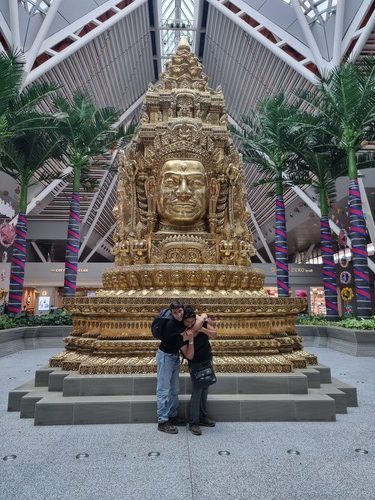
Replica of Bayon temple carvings at the Airport
The last morning of the trip all of us except Santosh were on the same flight. Thanks to the system glitch we talked about earlier Jani again had two different PNR’s so her luggage was again checked in under my name. Thankfully this time she had an eboarding card and didn’t have to leave the transit area and go through Immigration again in Malaysia airport. For the first leg of the flight I got the entire row to myself as the folks next to me moved to another row and was able to nicely stretch out. (Jani was allocated a different seat as seat selection was paid). By the time these folks moved Jani had already settled and didn’t want to move. Plus there was no space near my seat for the carryon luggage to be stored…
The second leg of the flight was much worse as it was a full flight and folks came with multiple carry-on bags so they ran out of room and had to put a bunch of bags in the cargo area. Plus multiple folks were seated away from their group so people were constantly moving up & down and kids were running around like it was a train instead of a flight. I was watching this hilarious show called “I am Nobody” so was able to ignore most of it but still.
Finally landed in Bangalore and were able to head home and crash. It felt so good sleeping in my own bed without feeling like I was going to melt in the heat.
– Suramya
